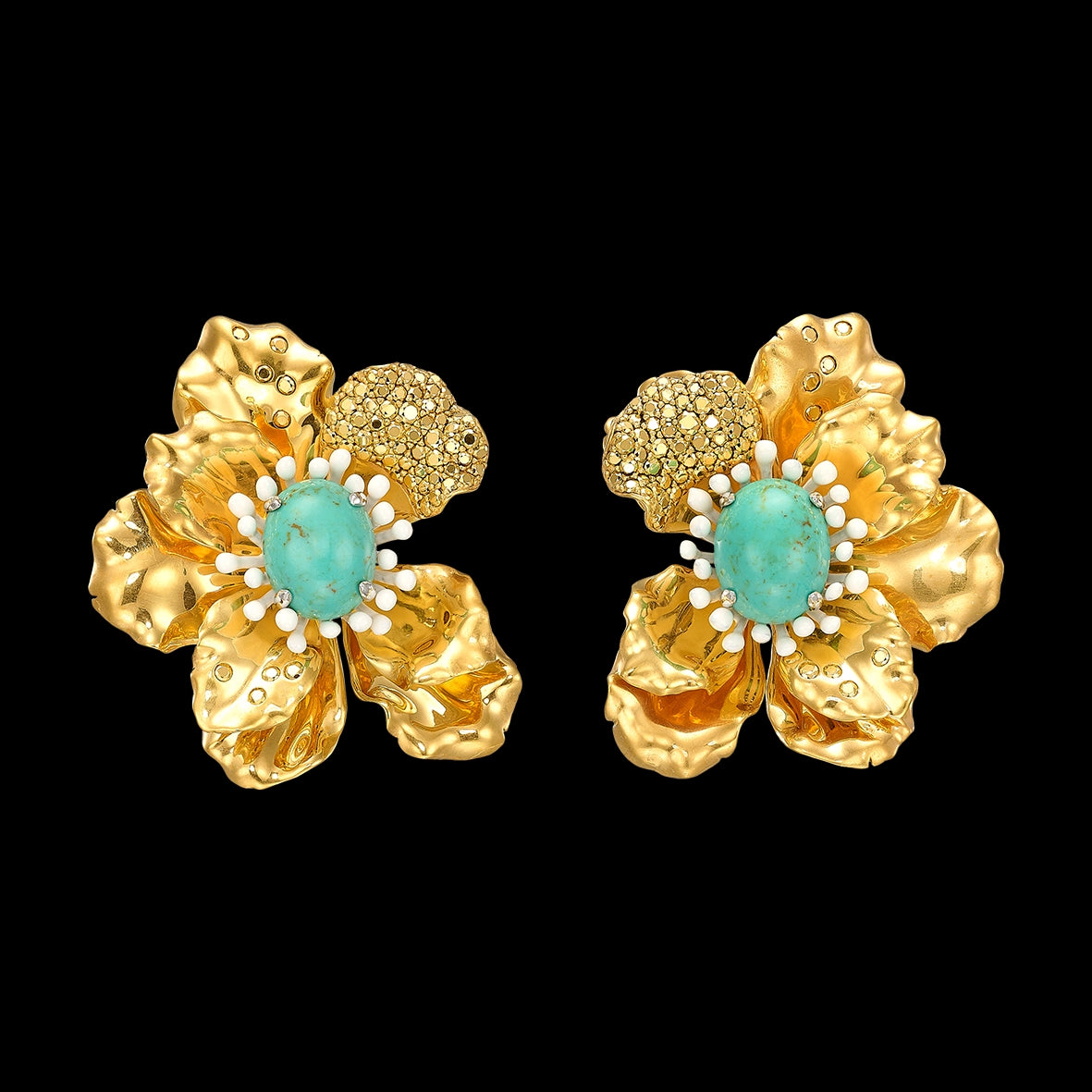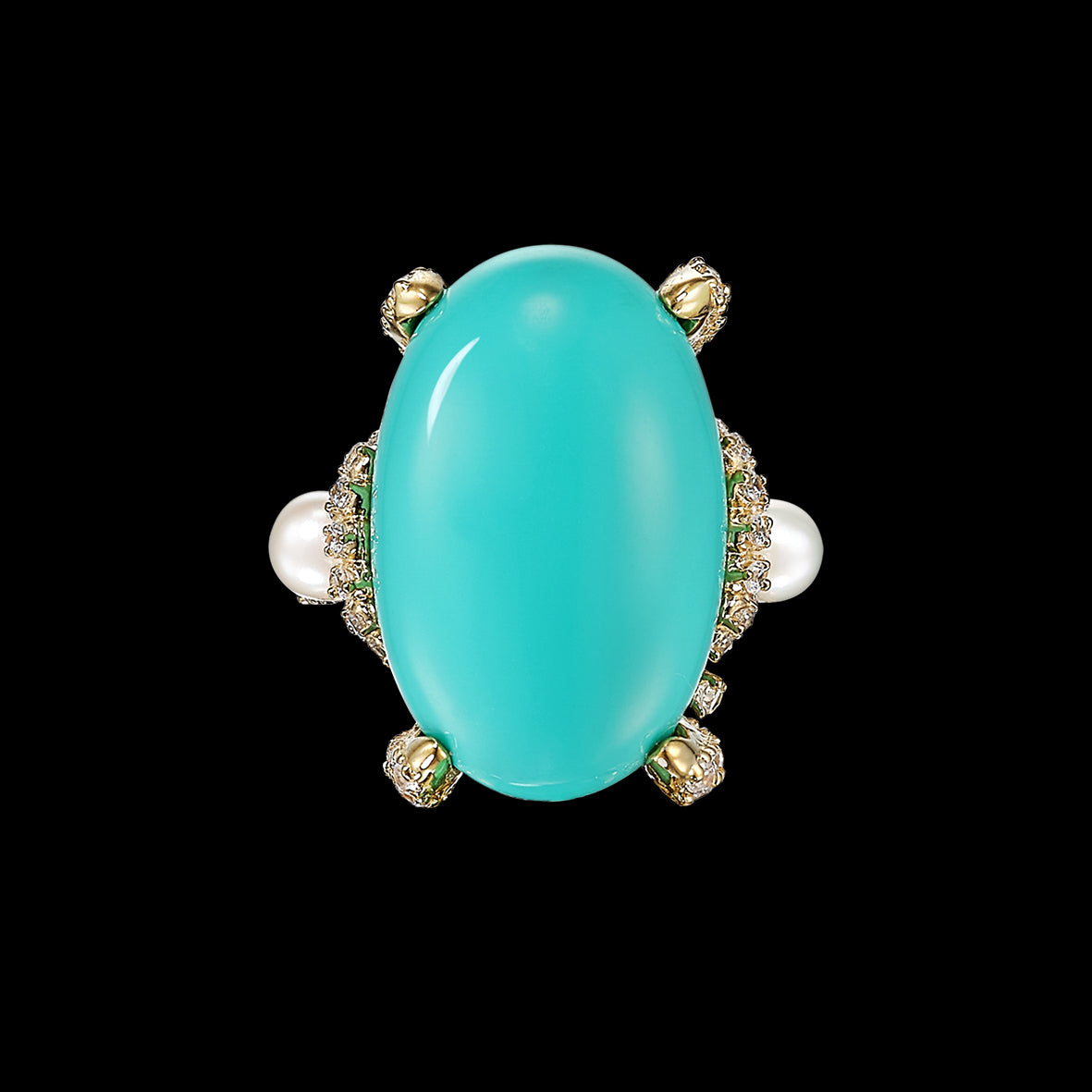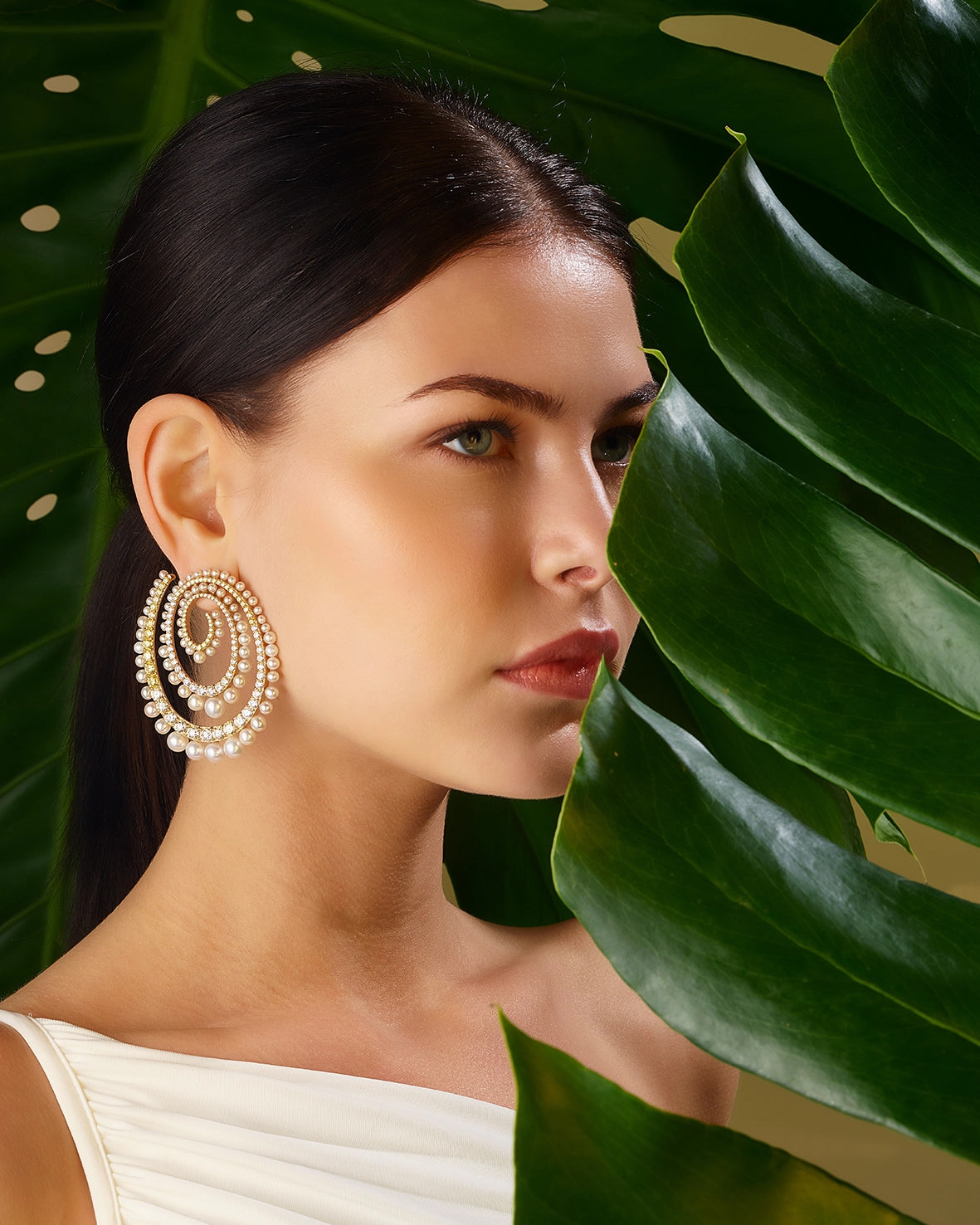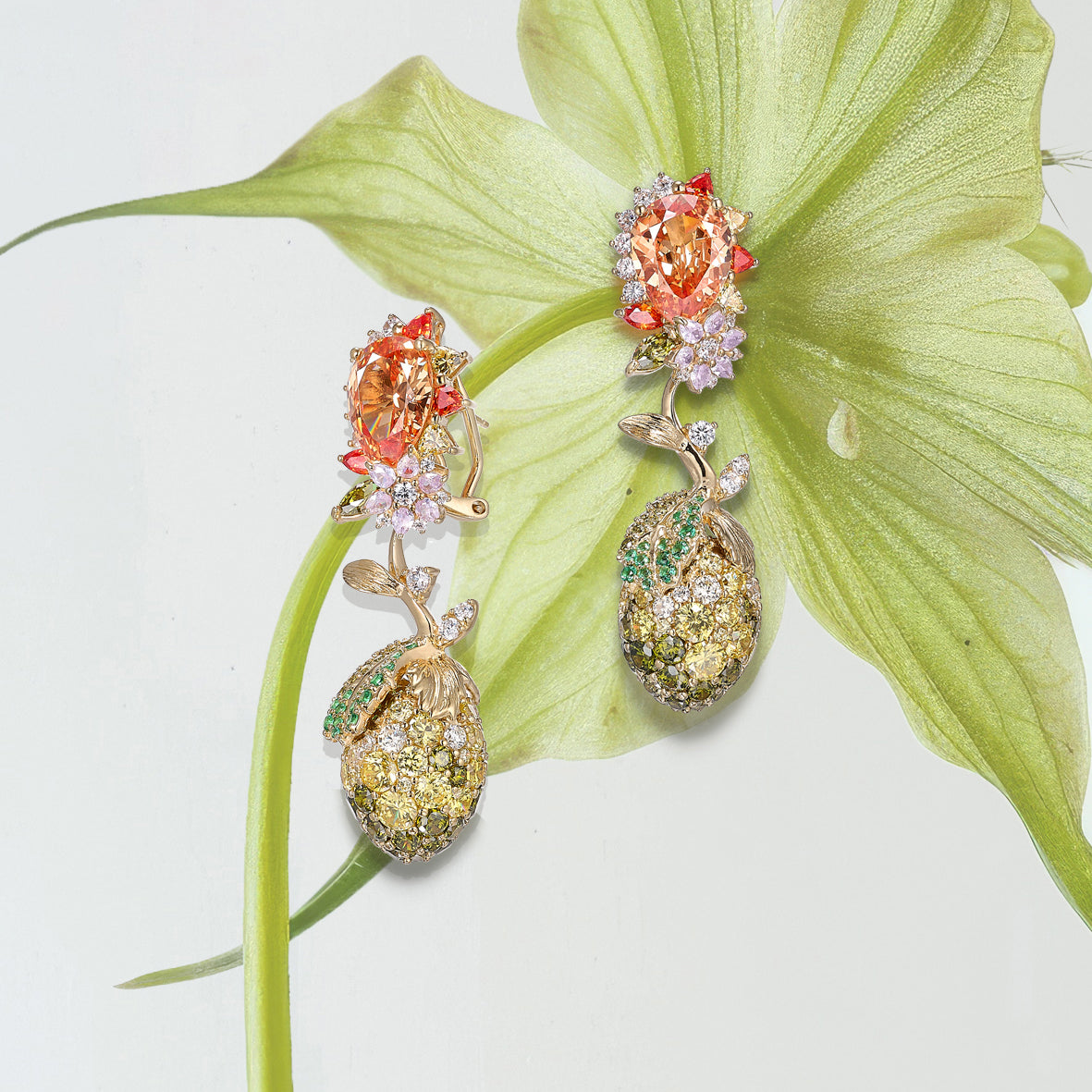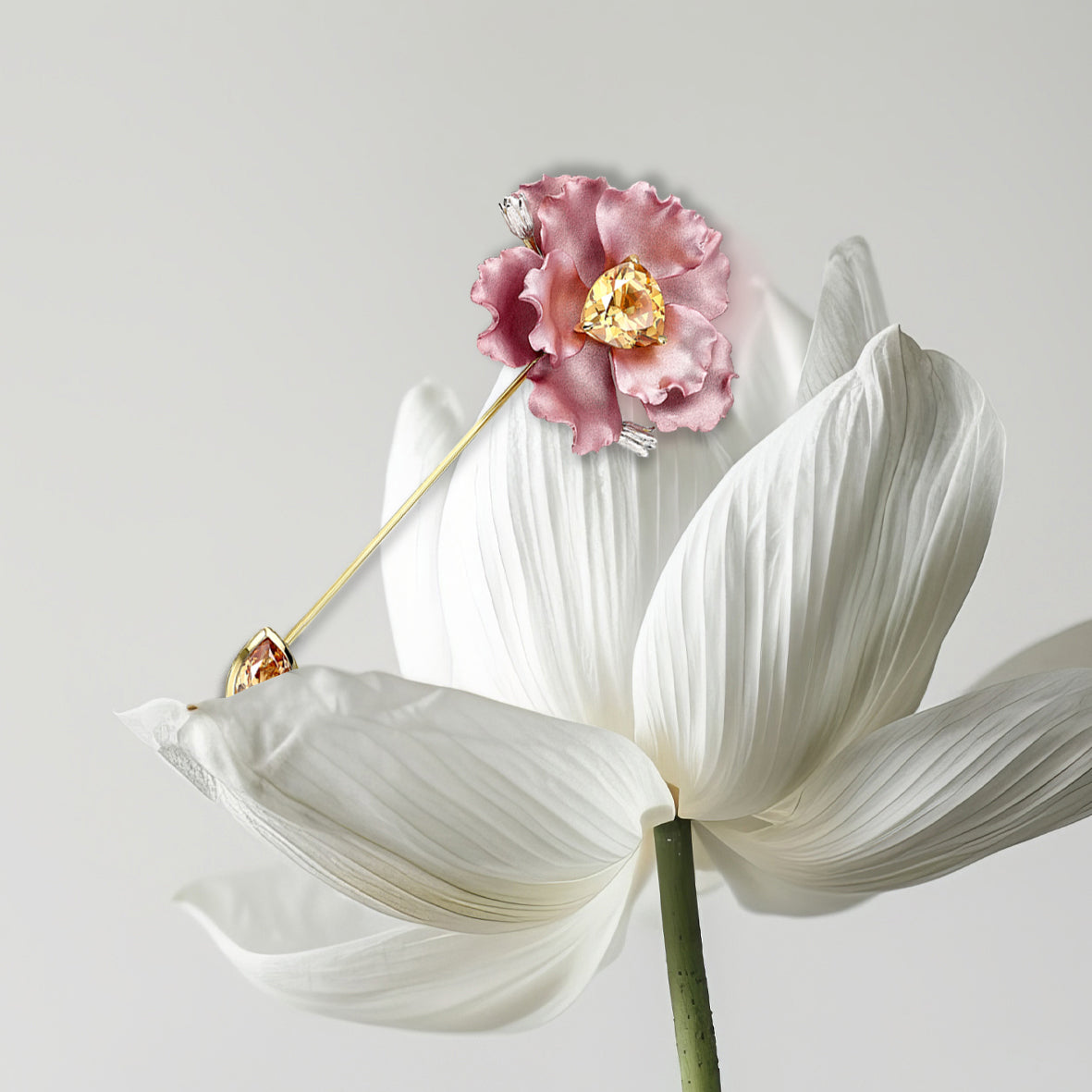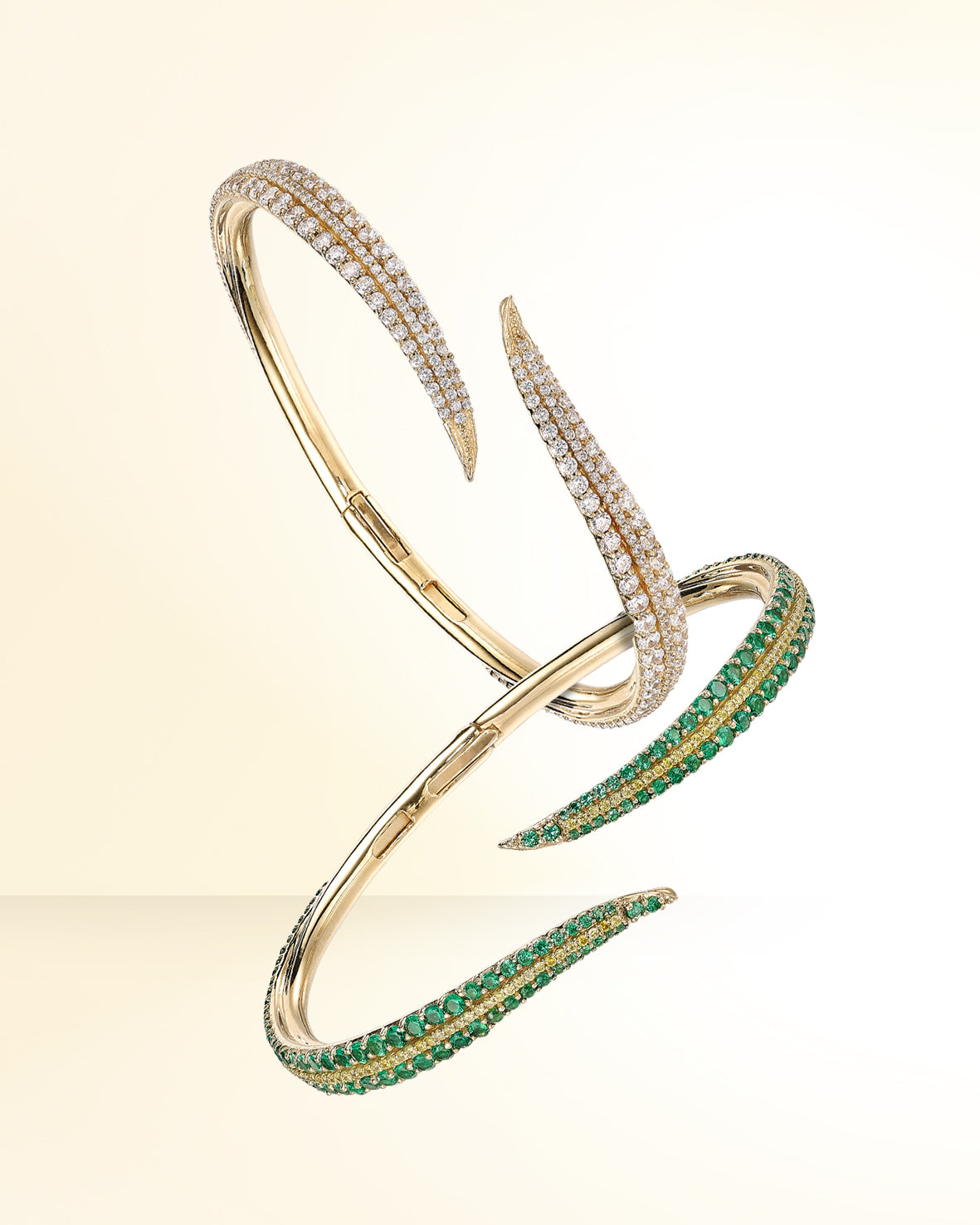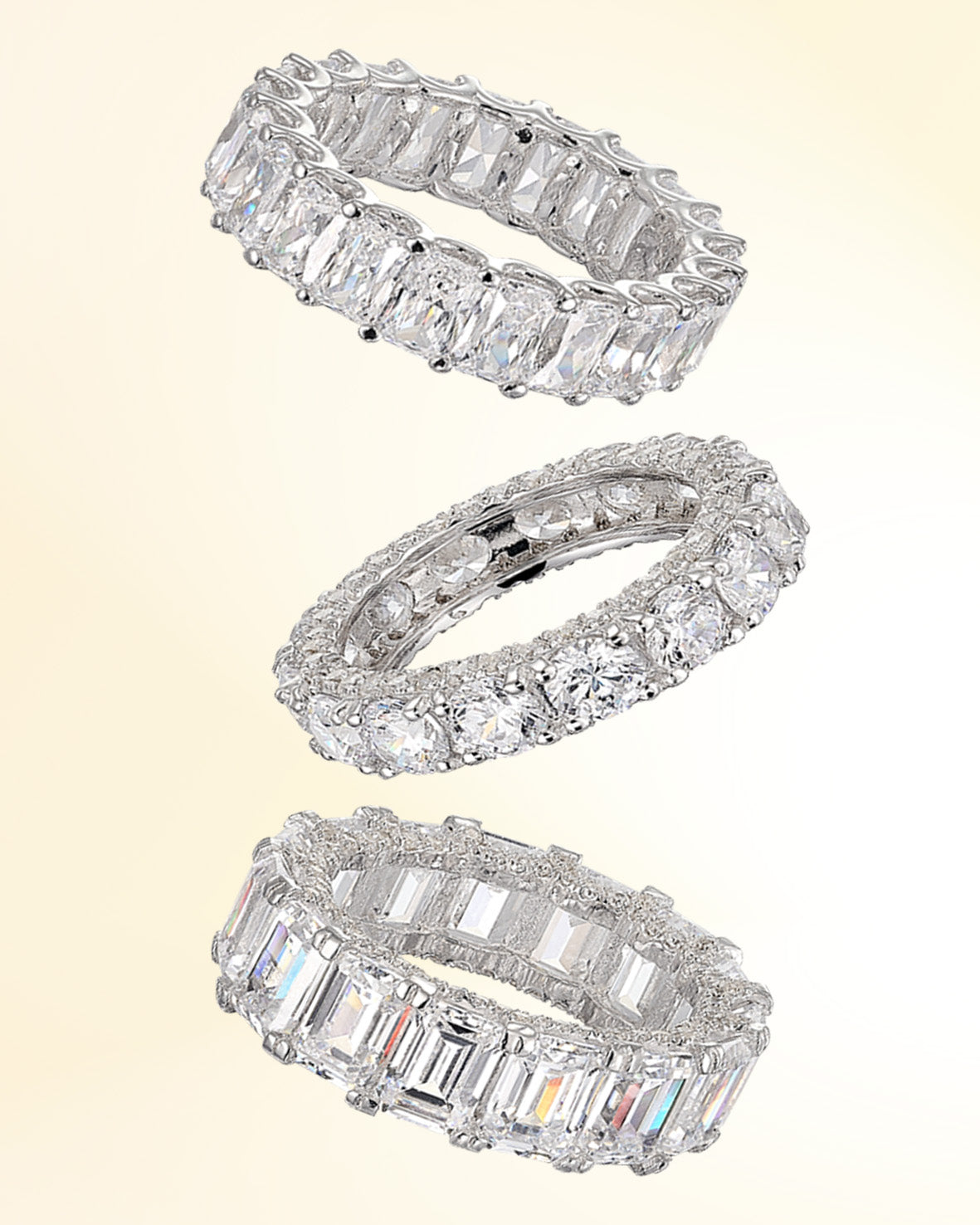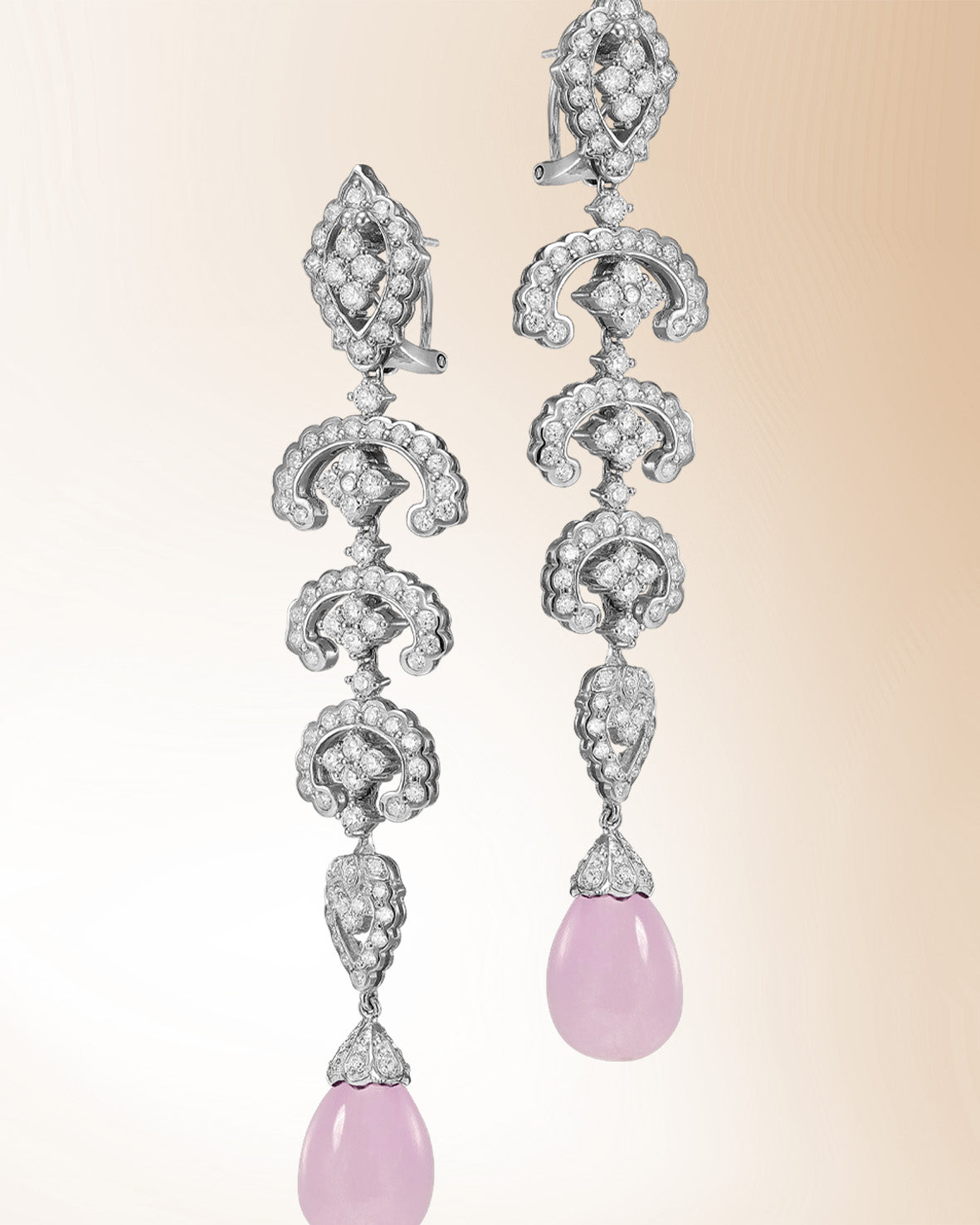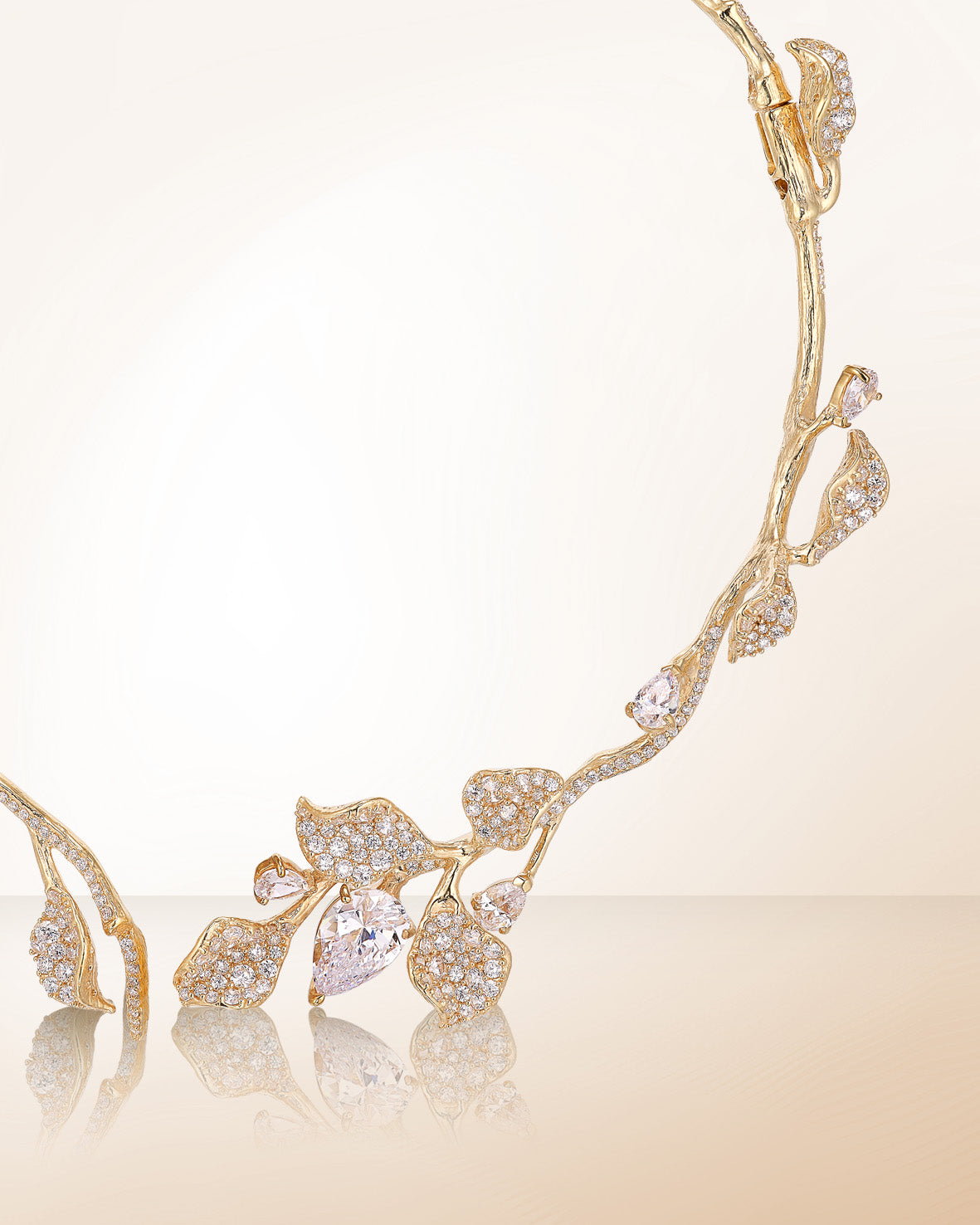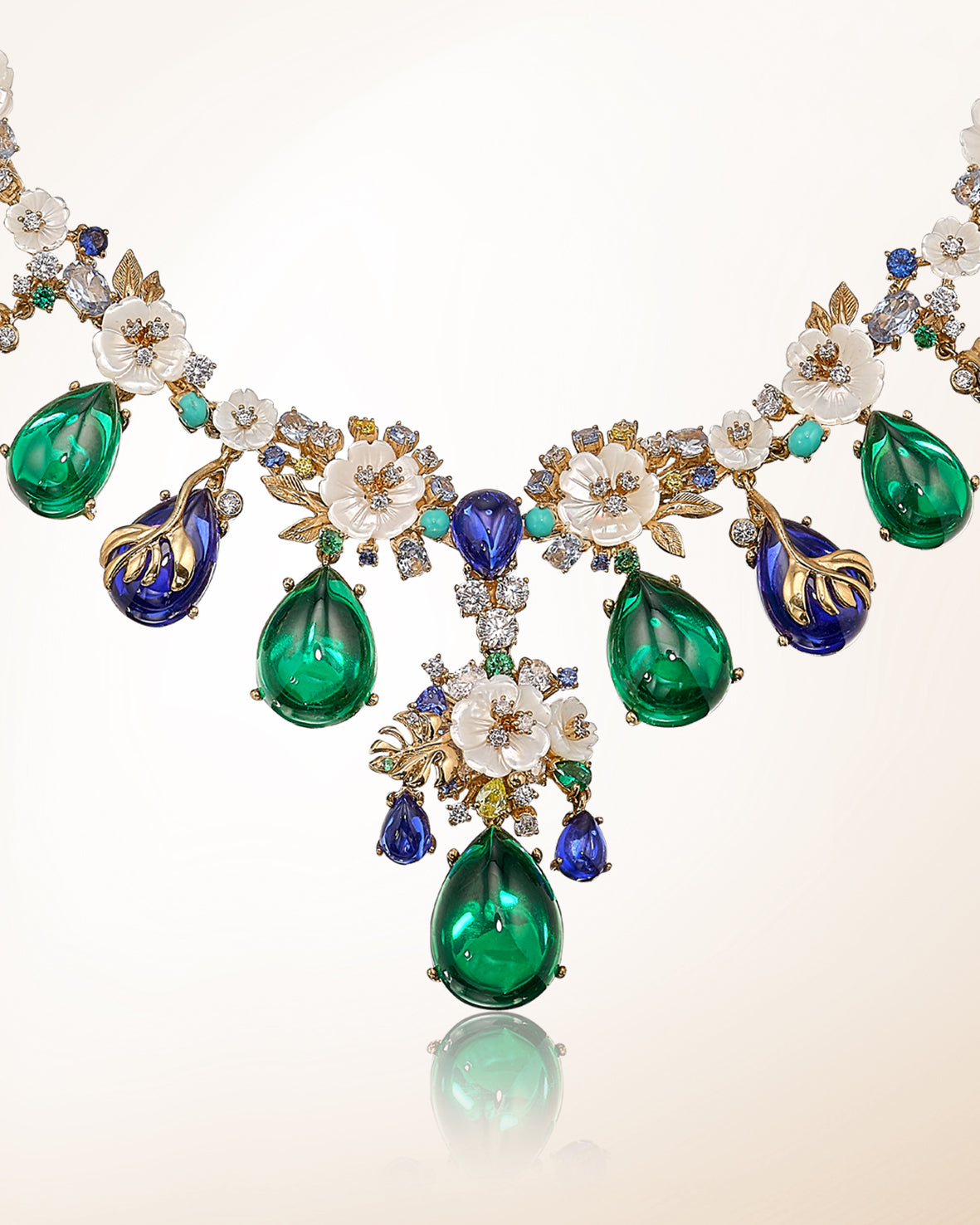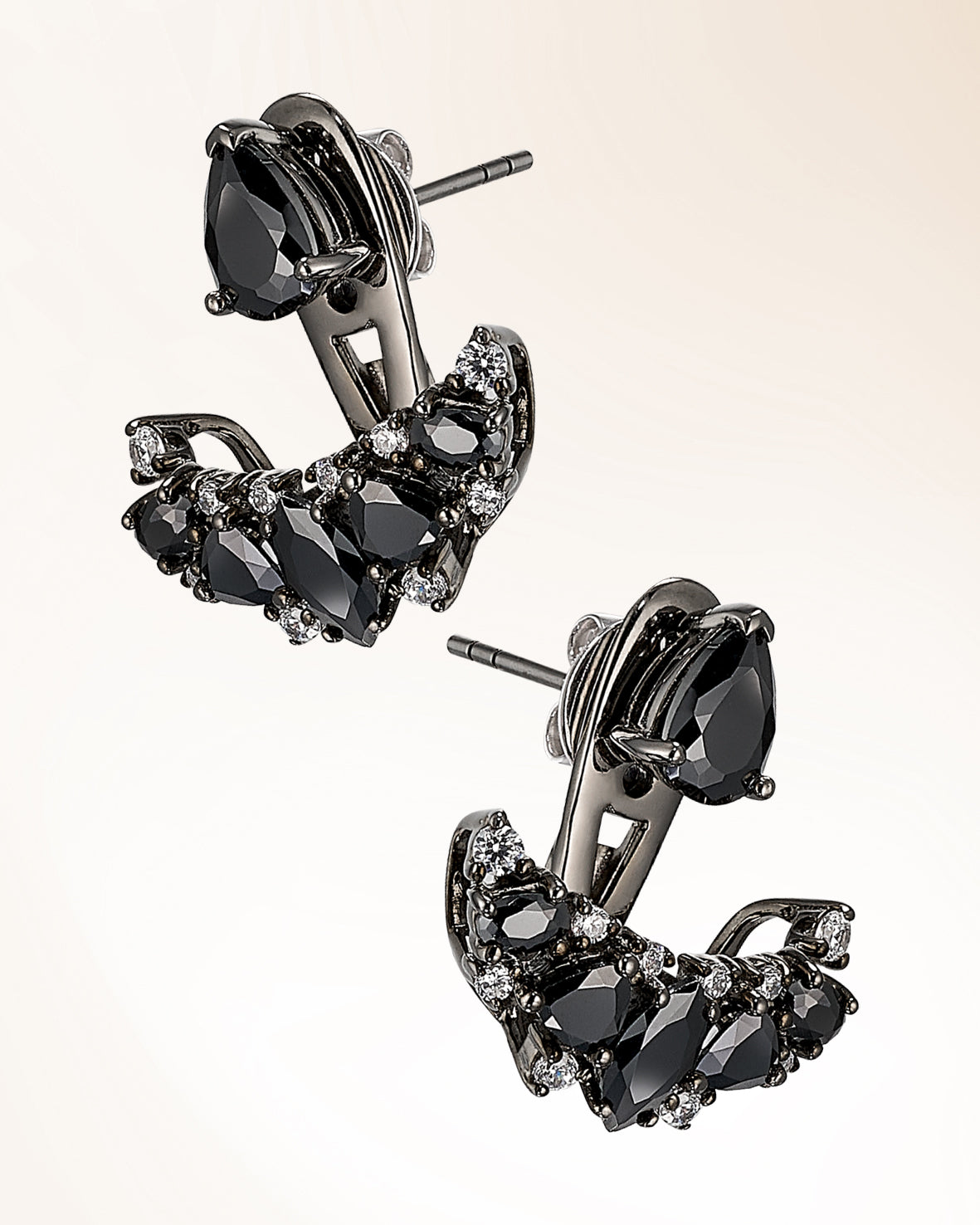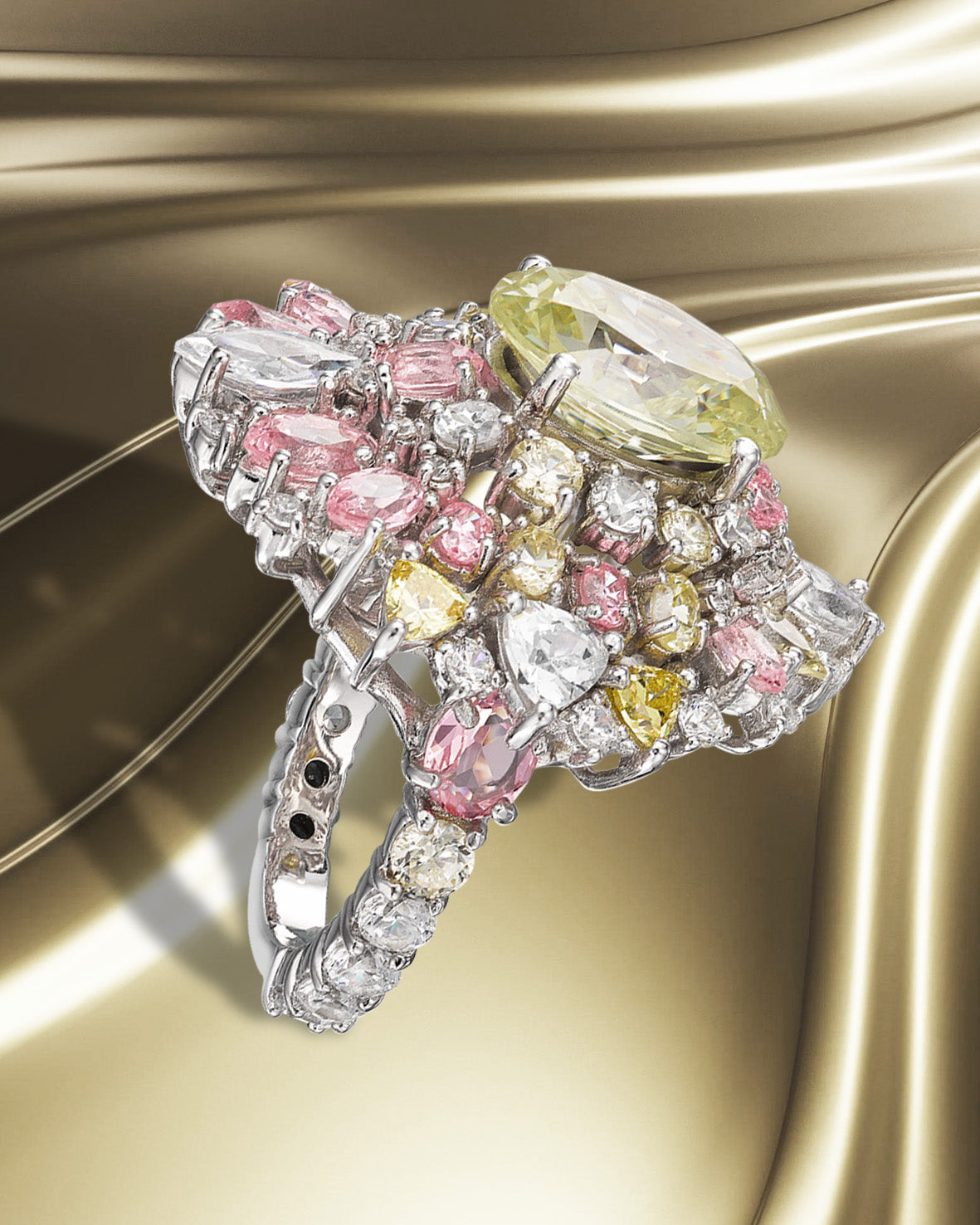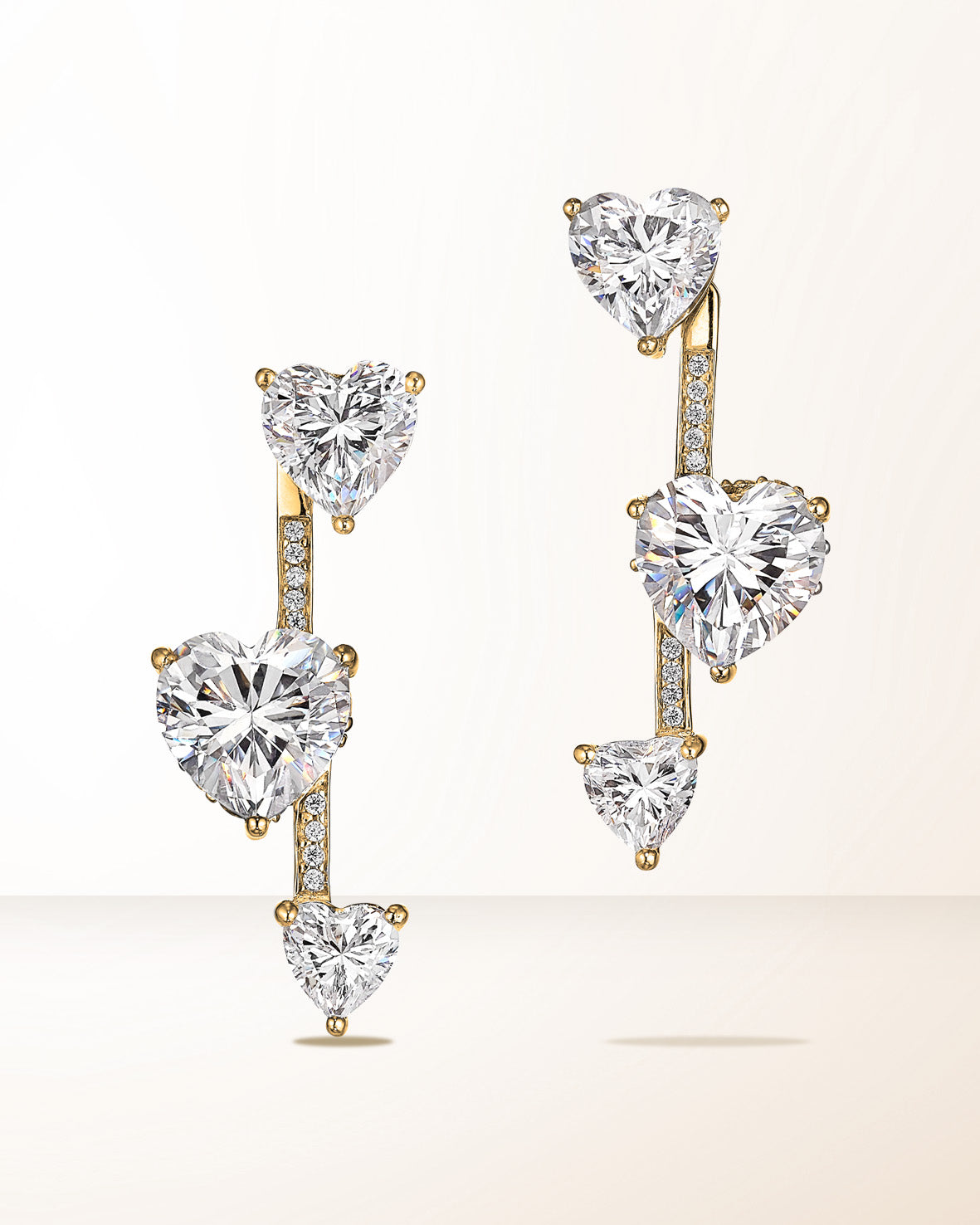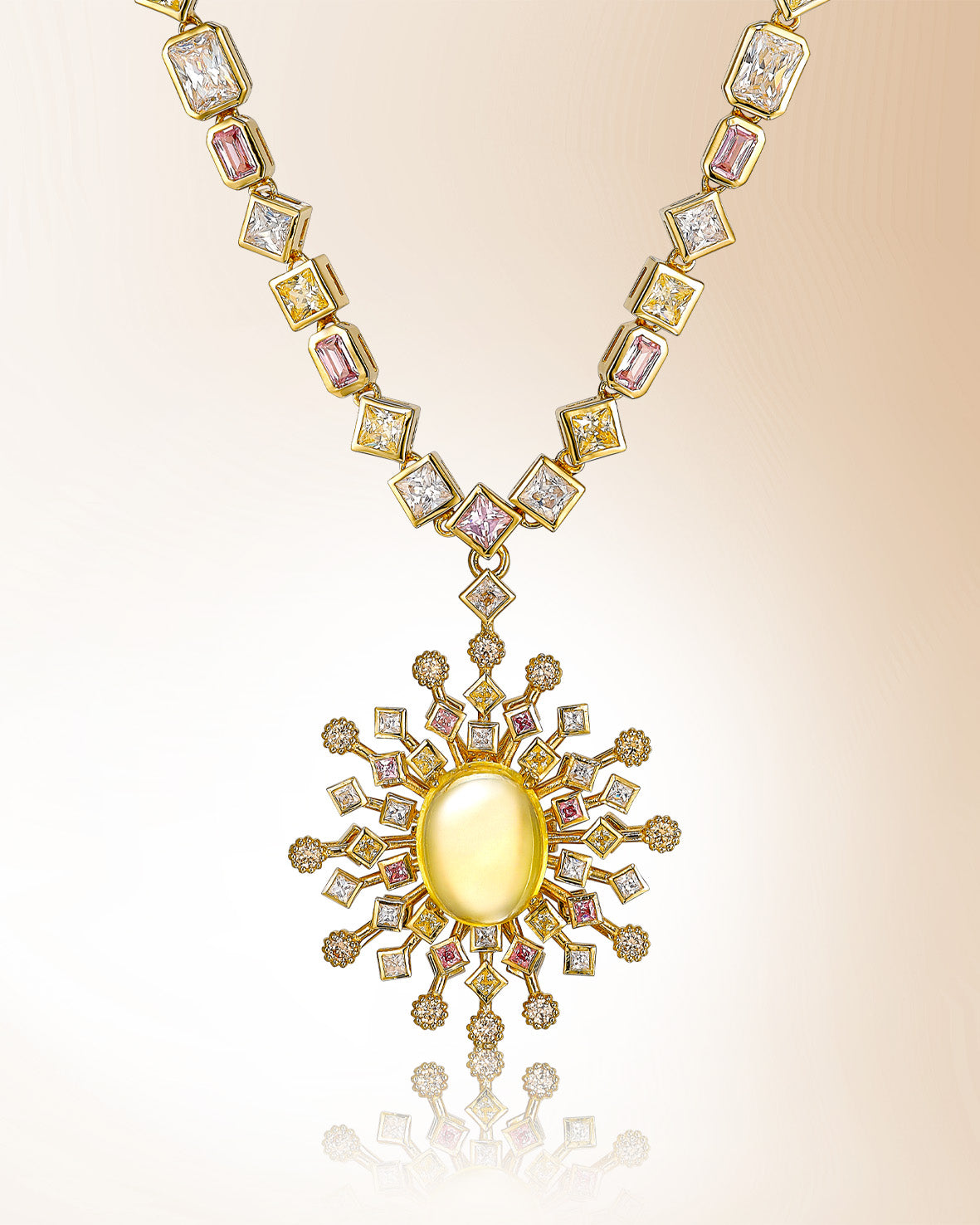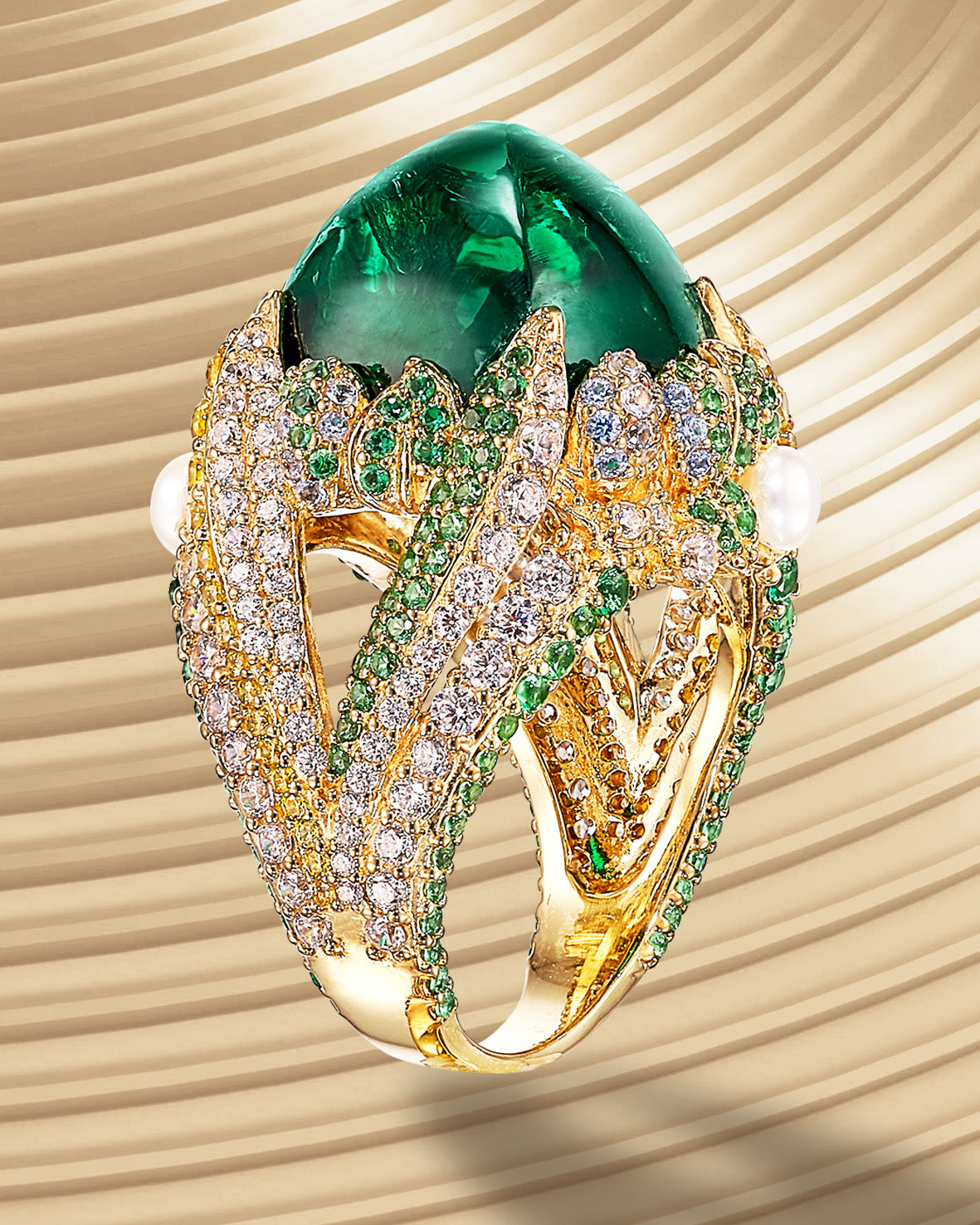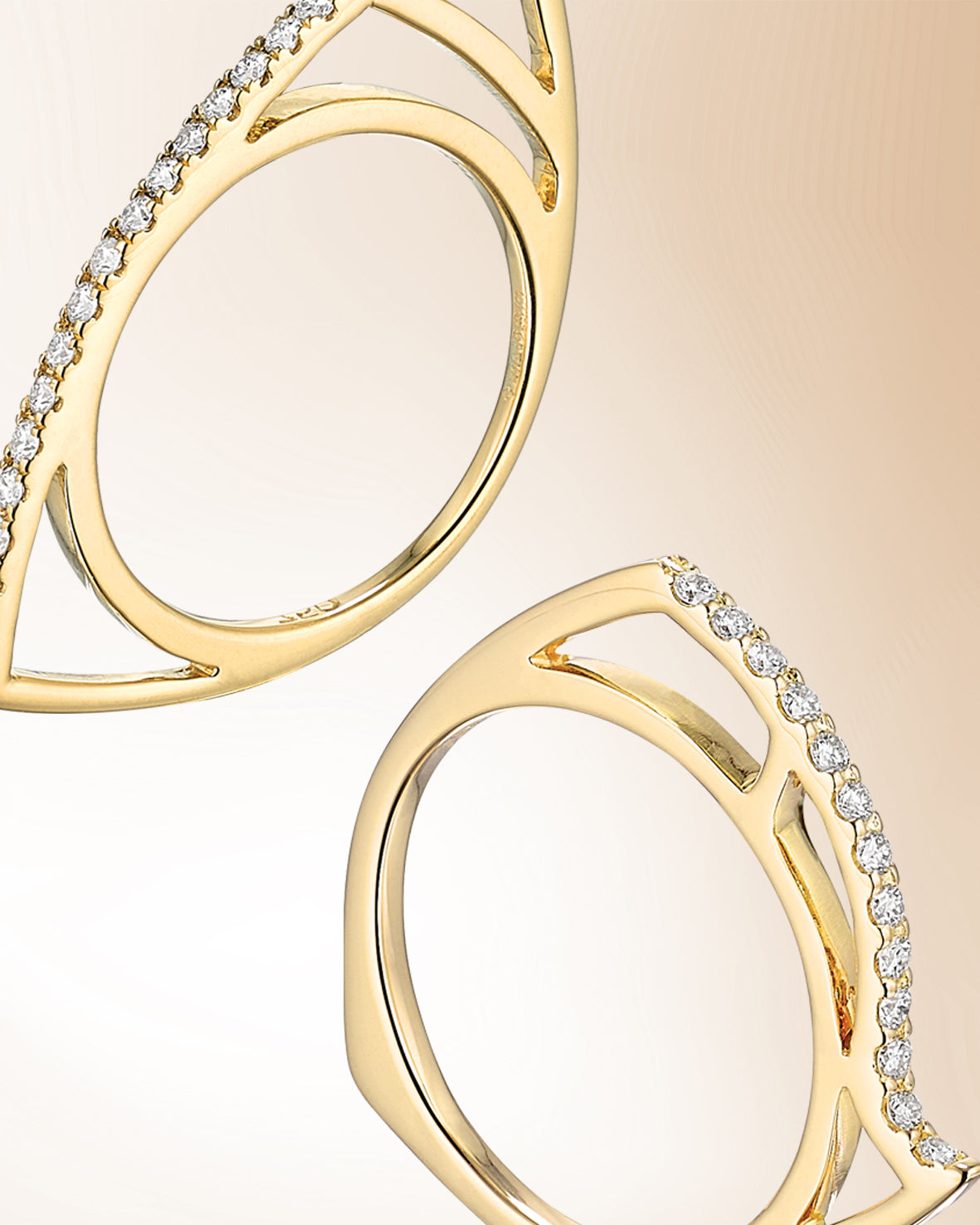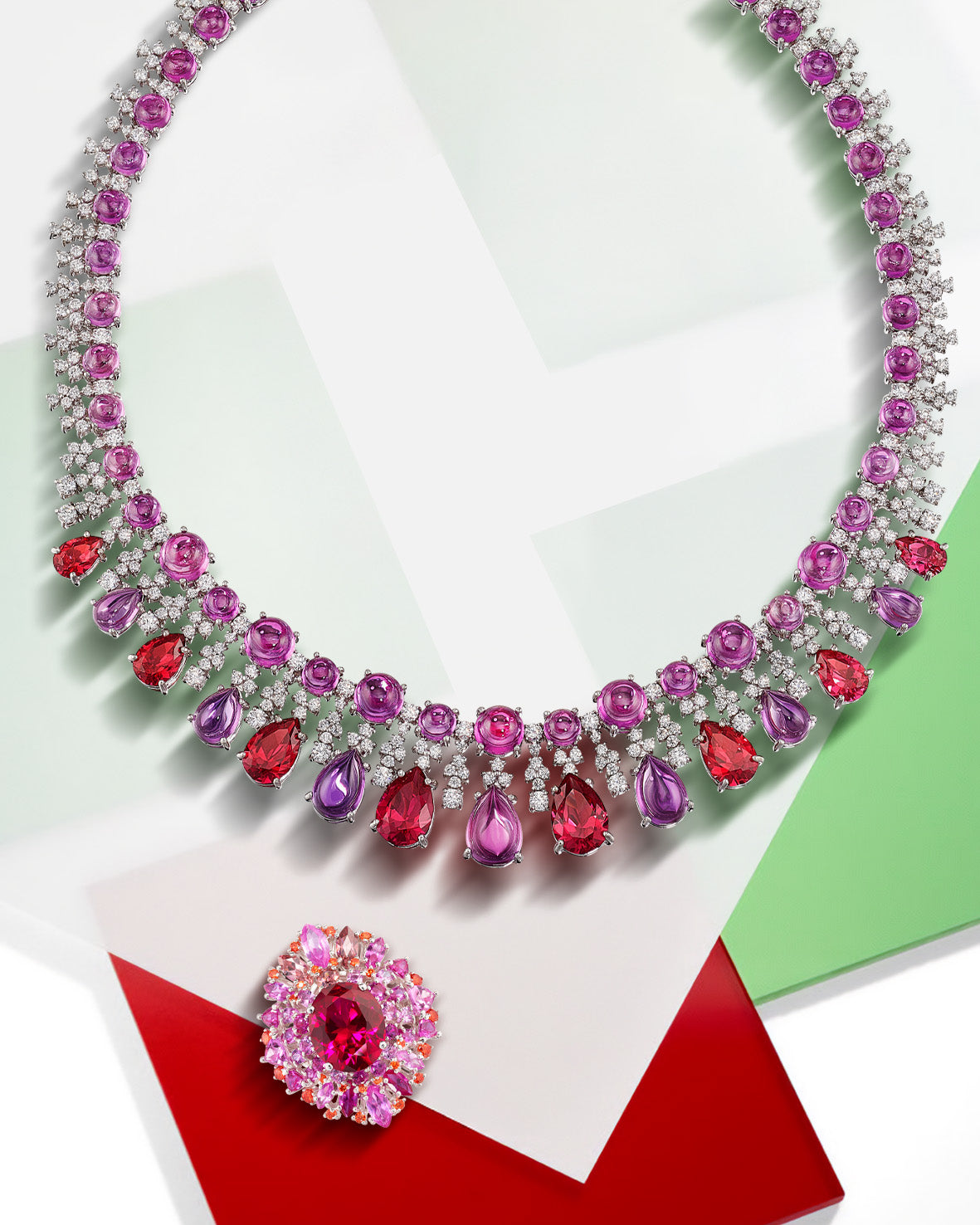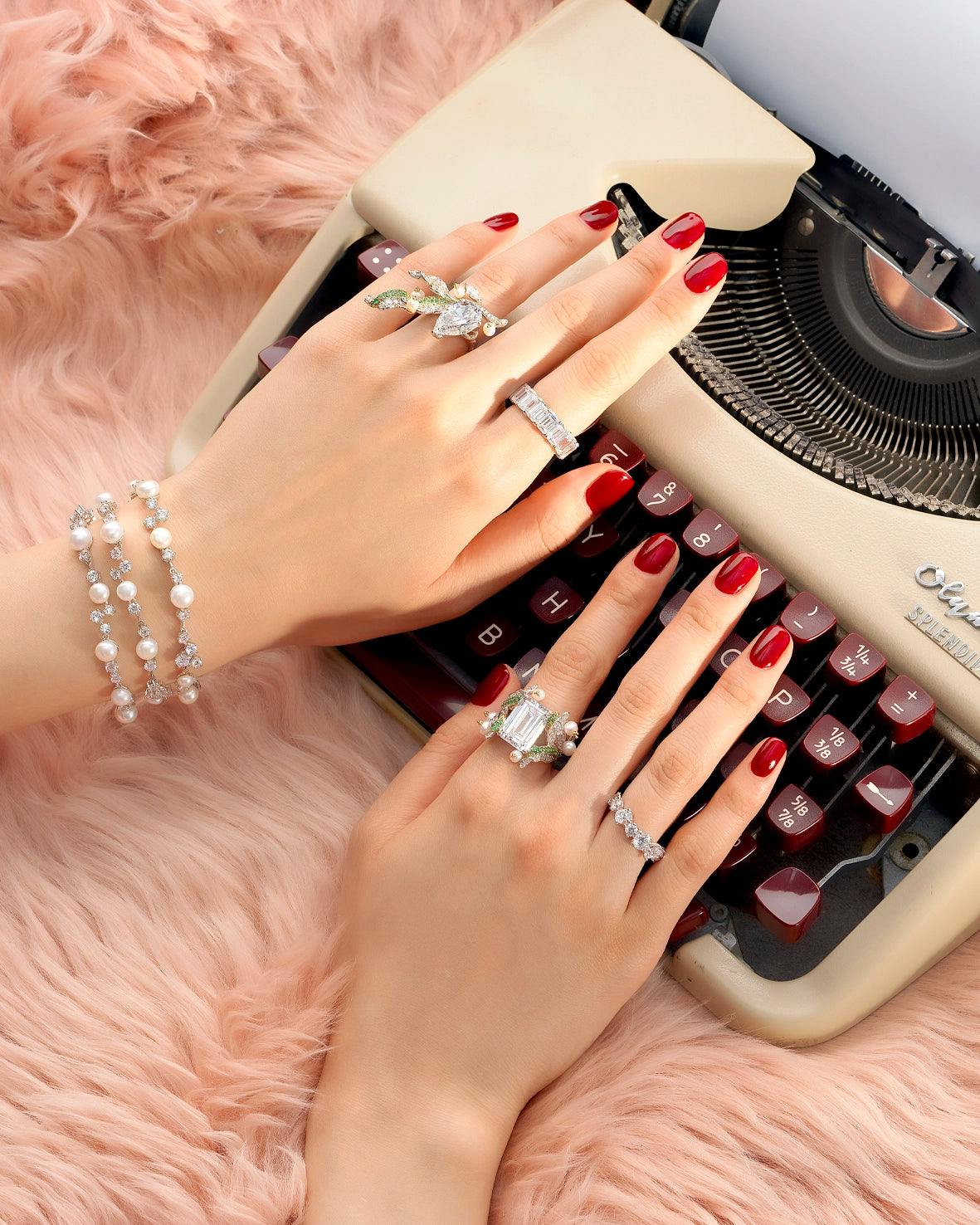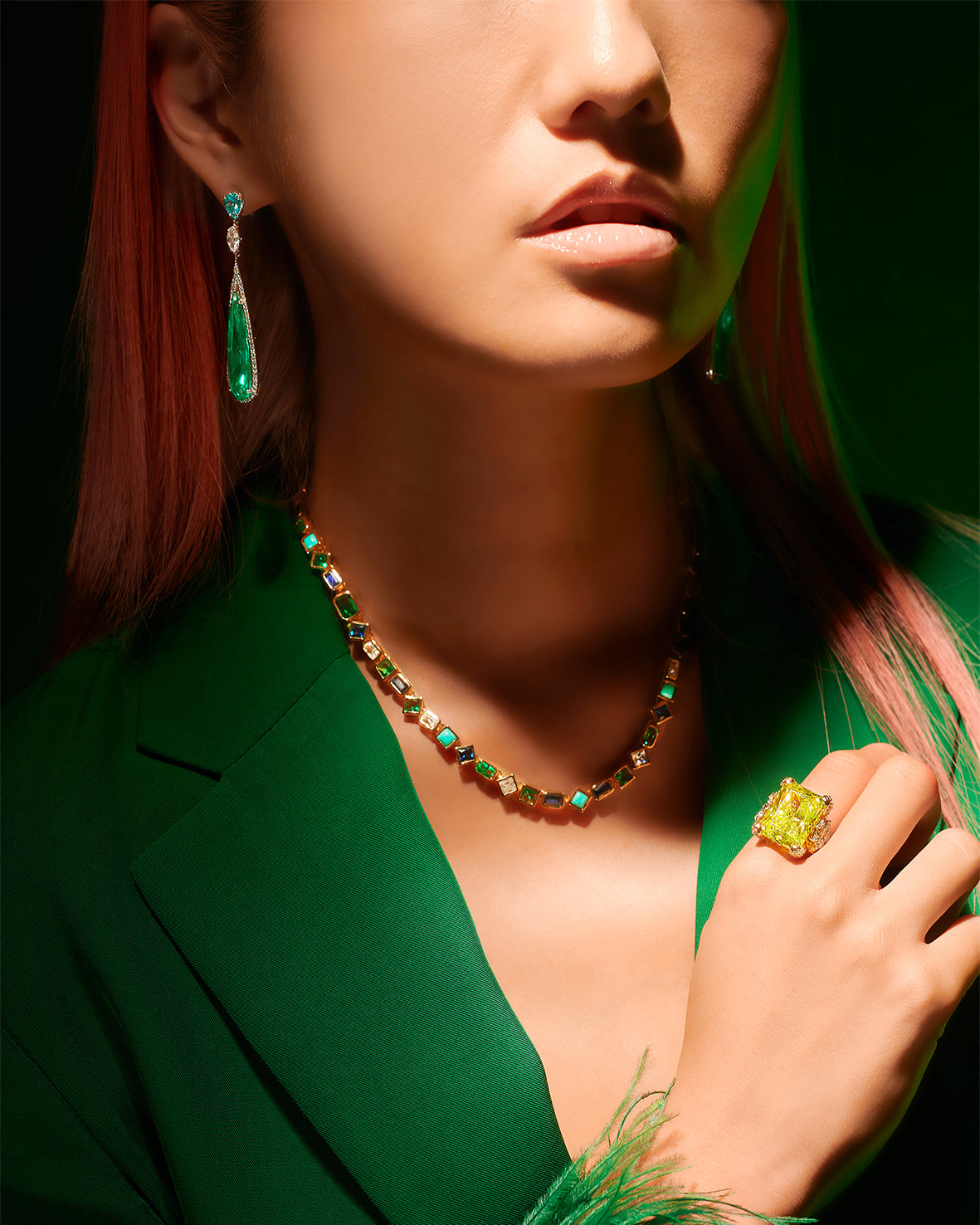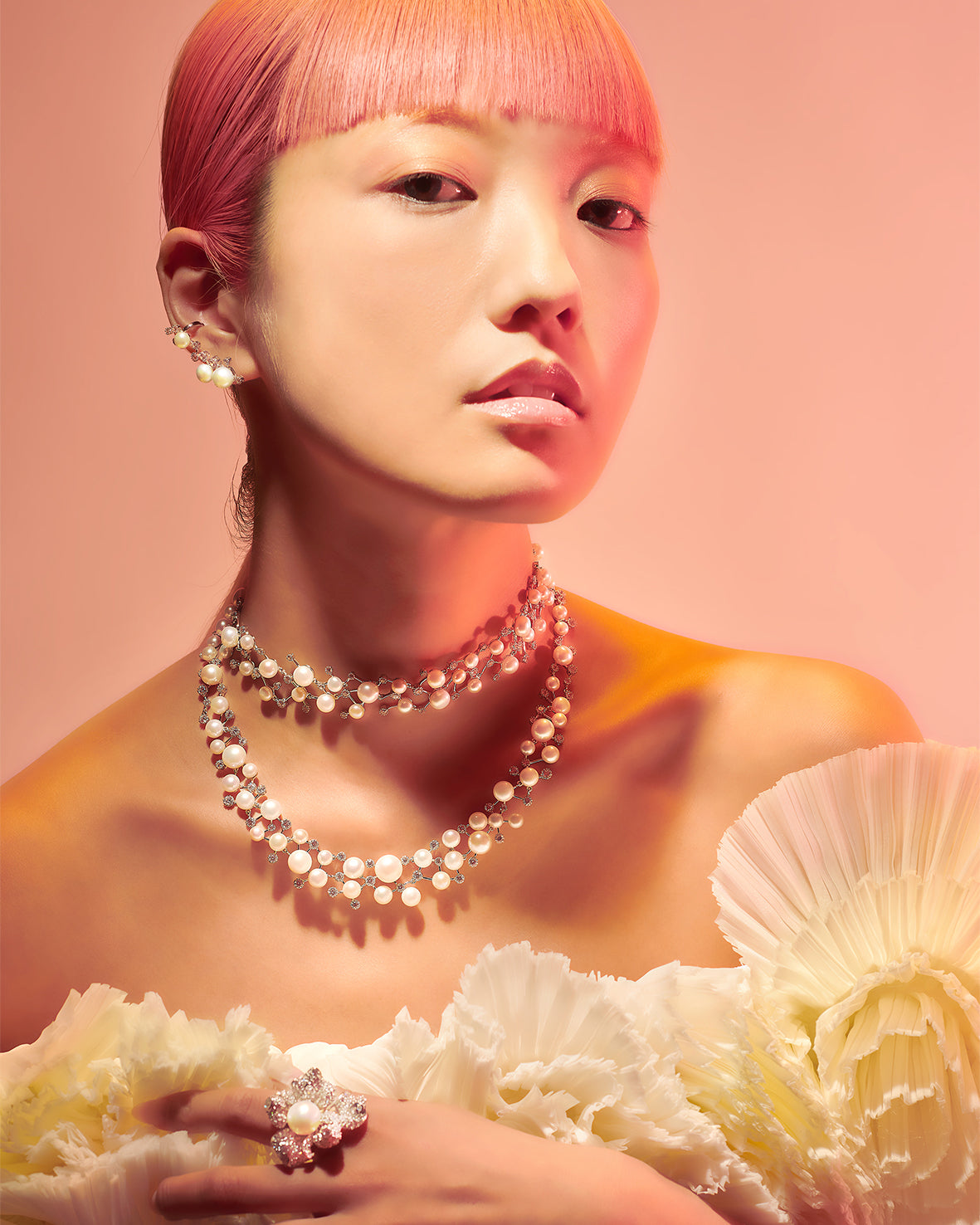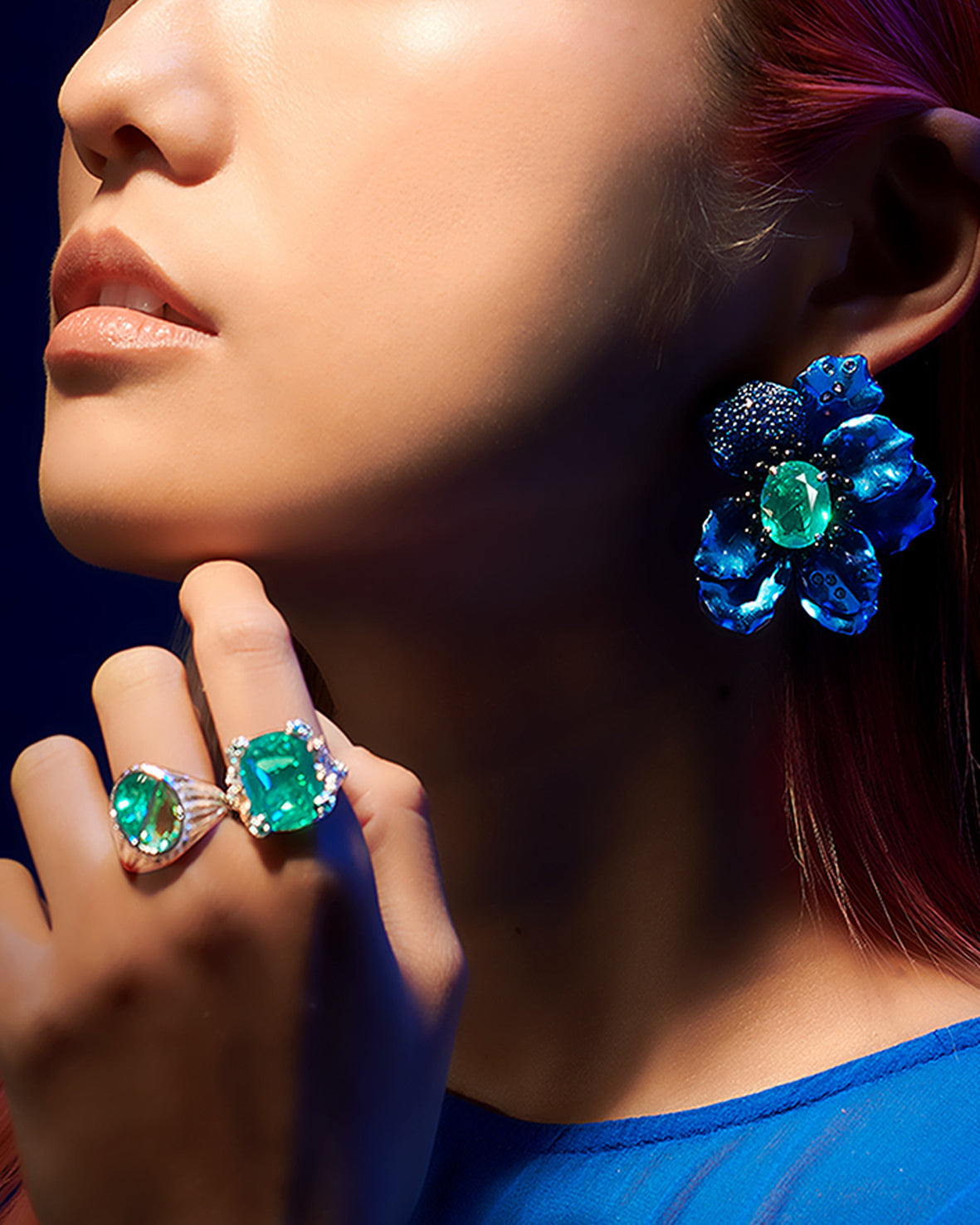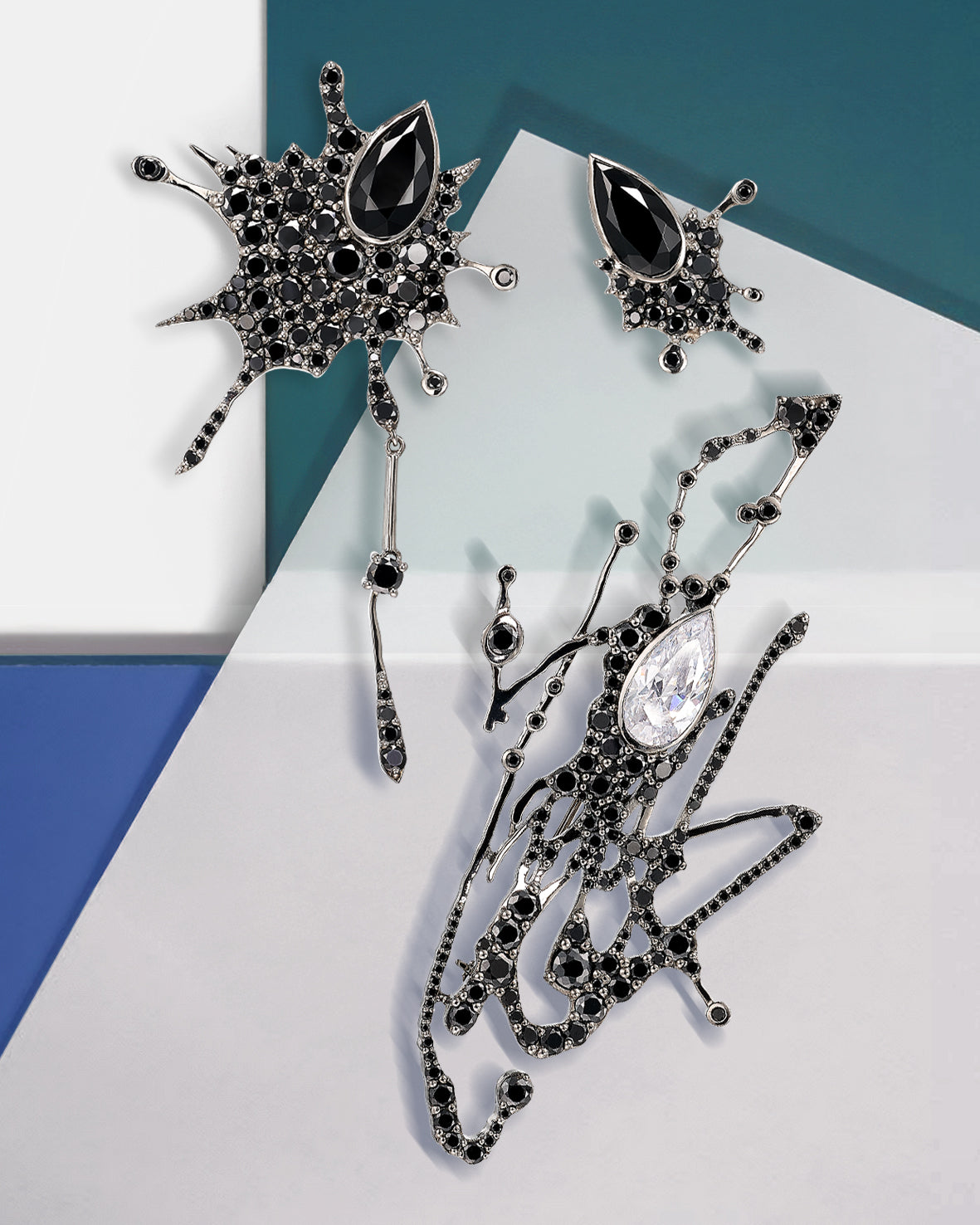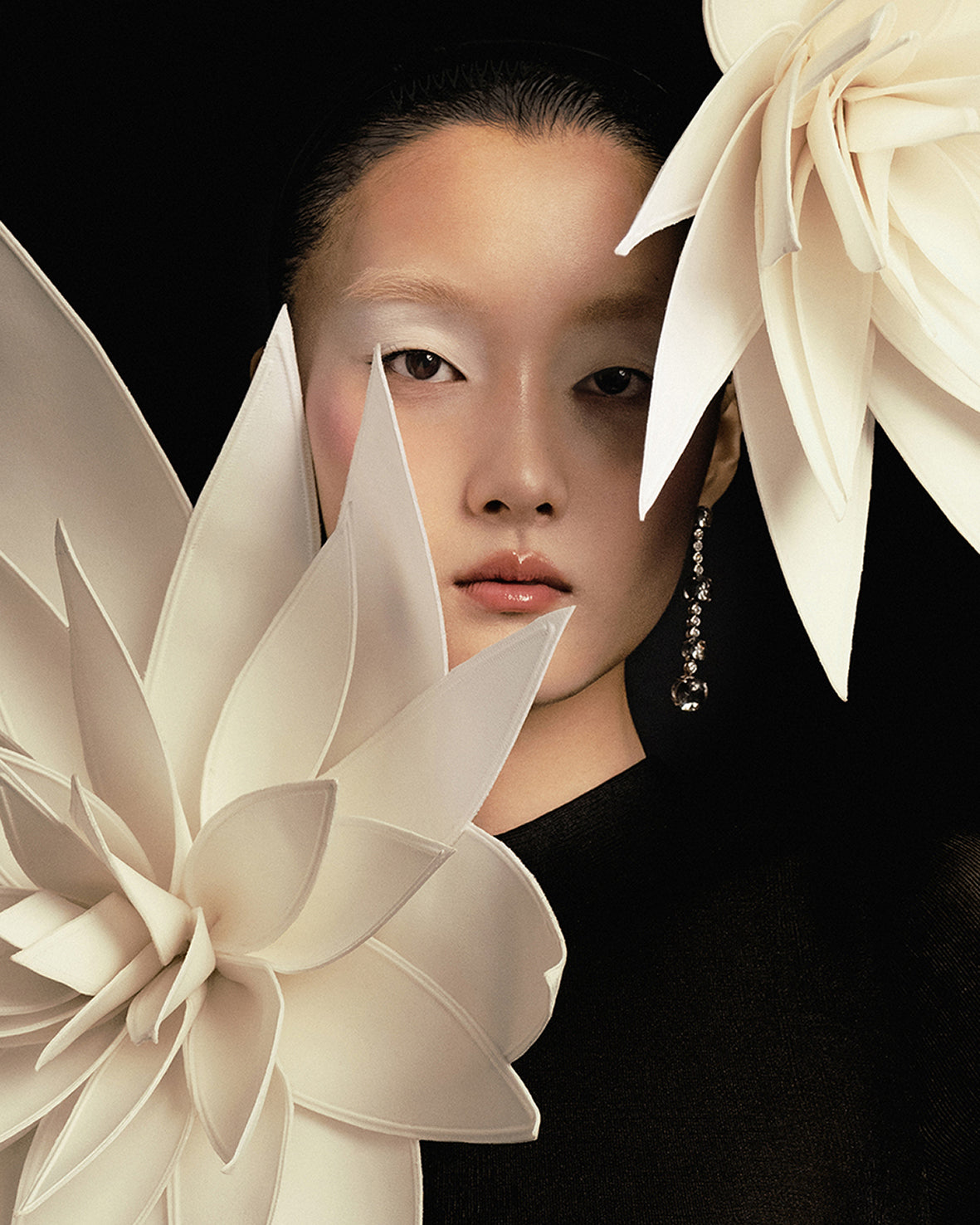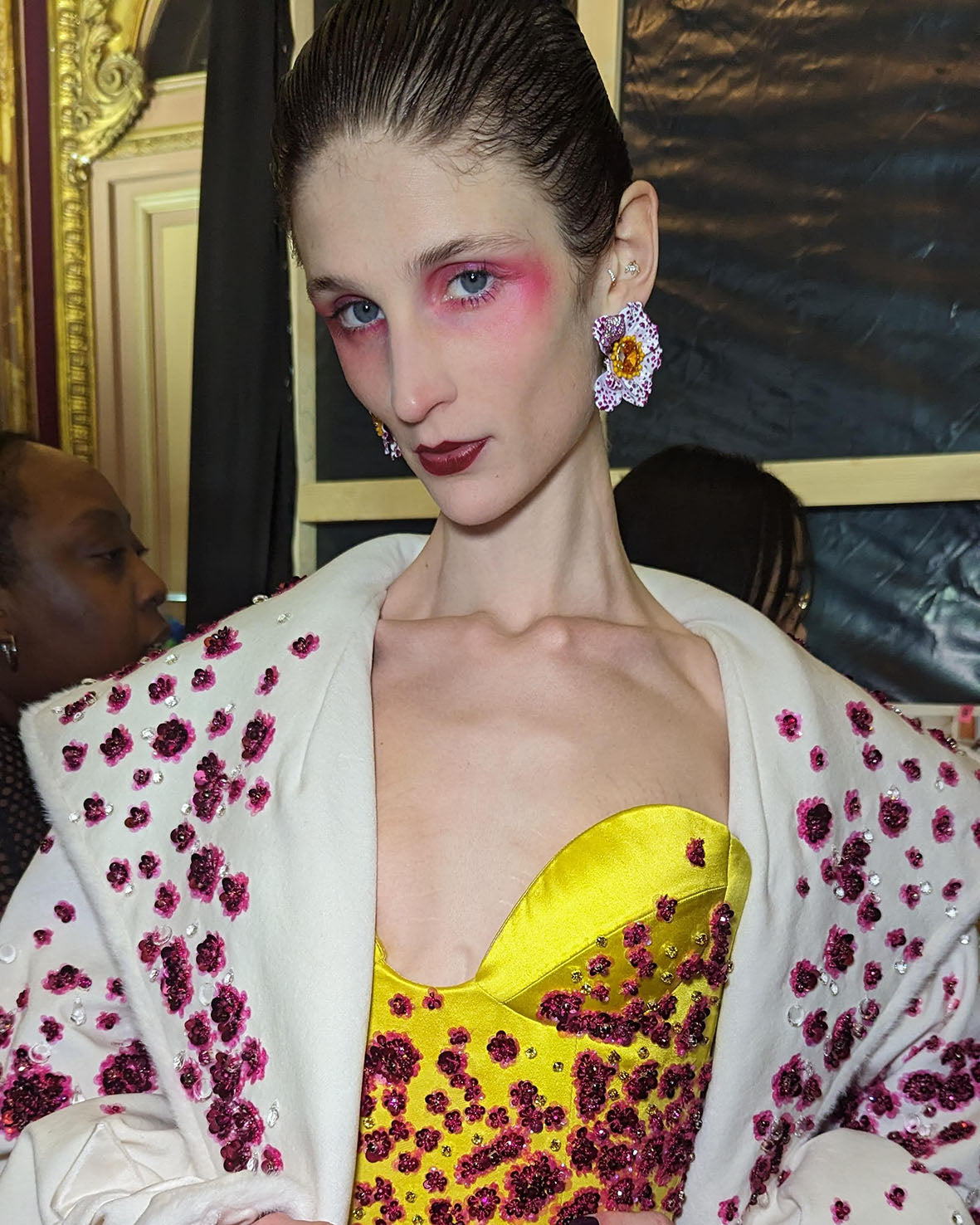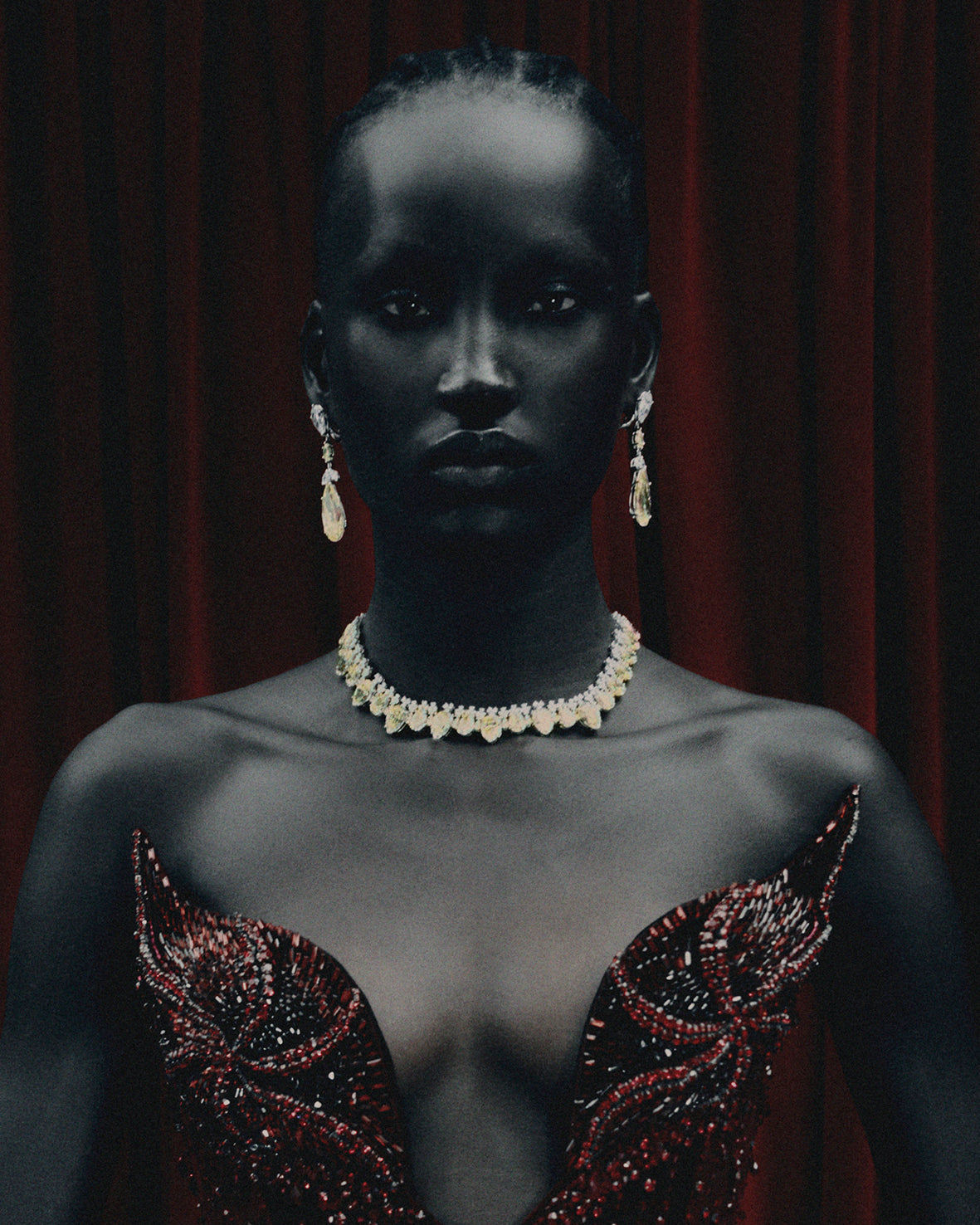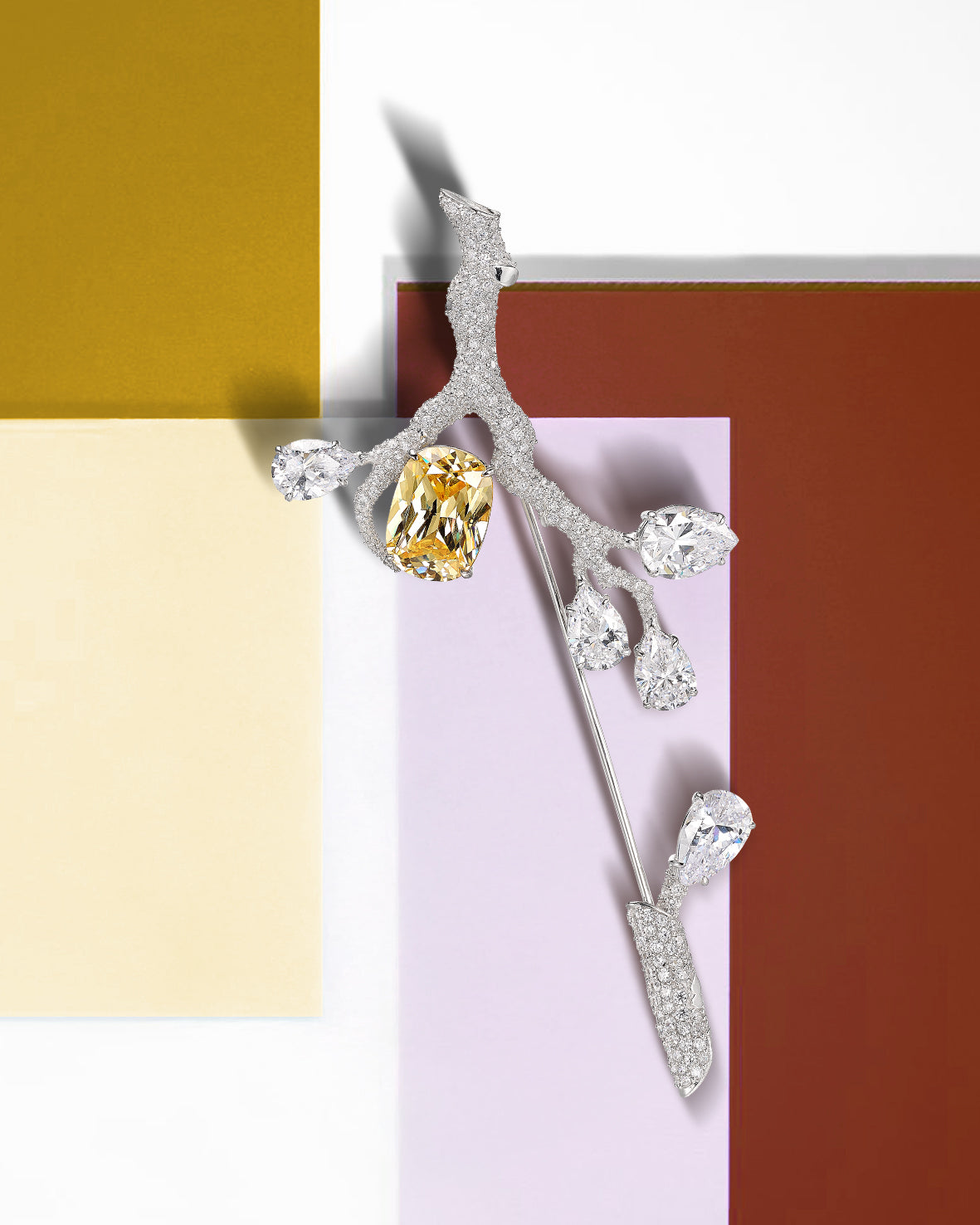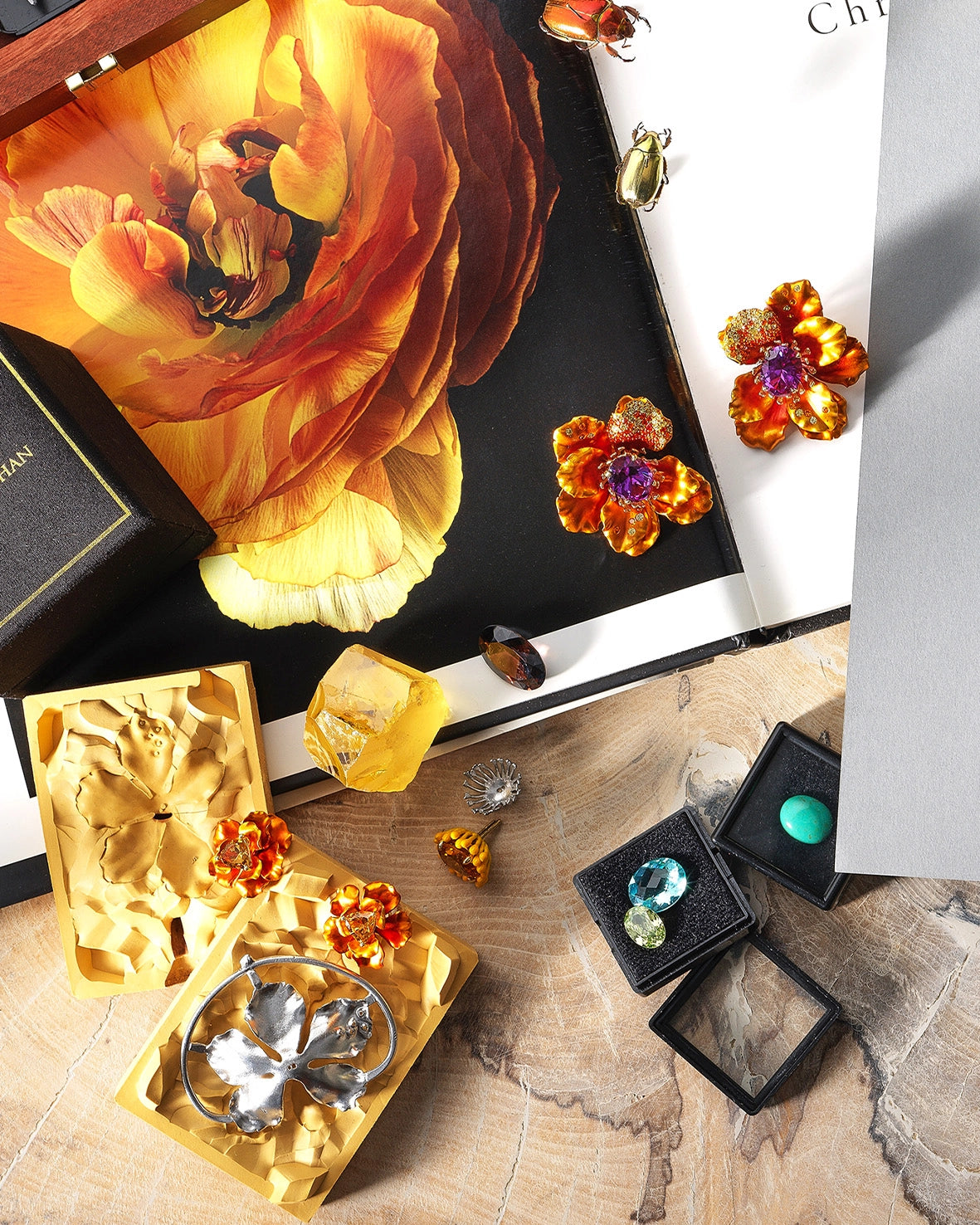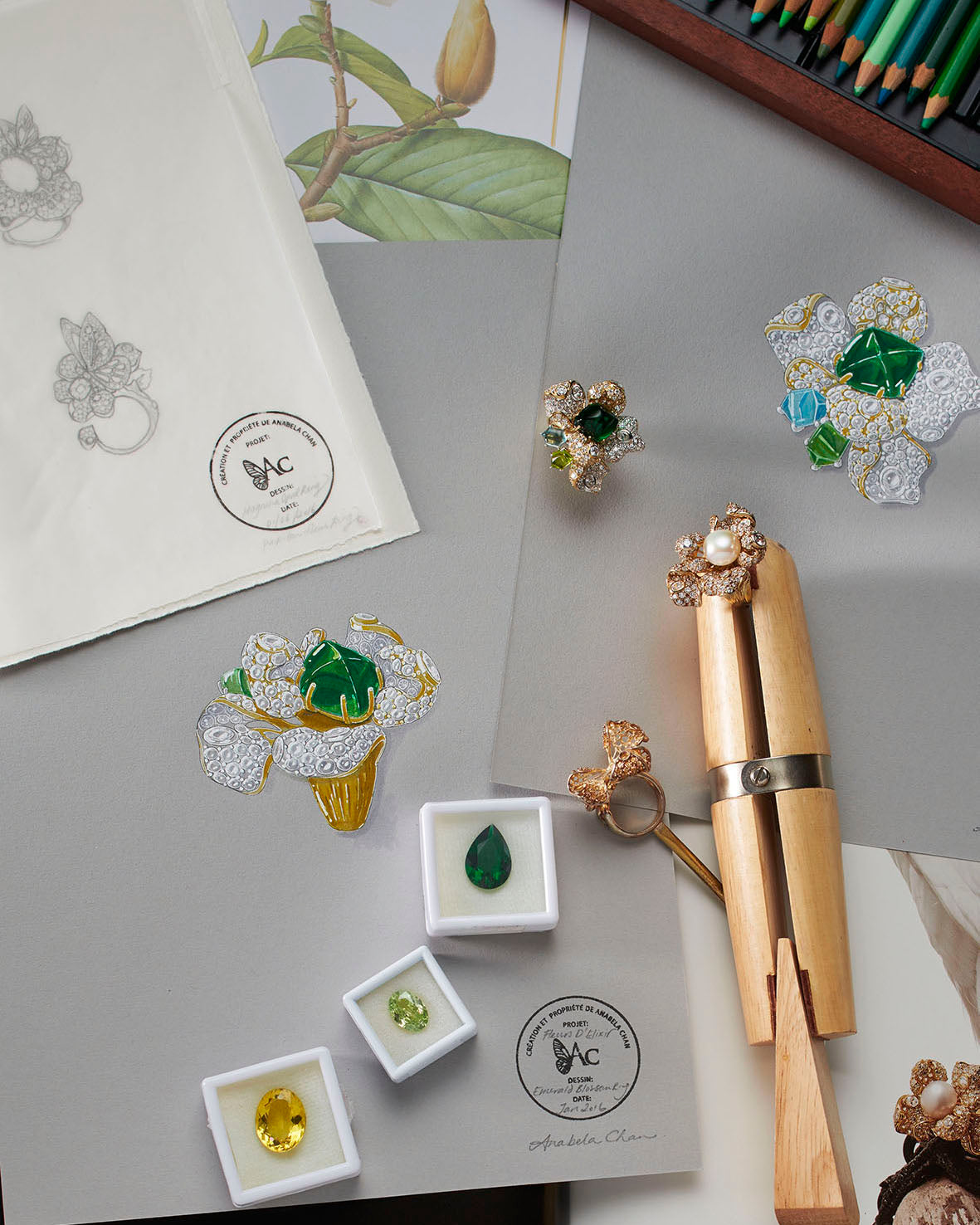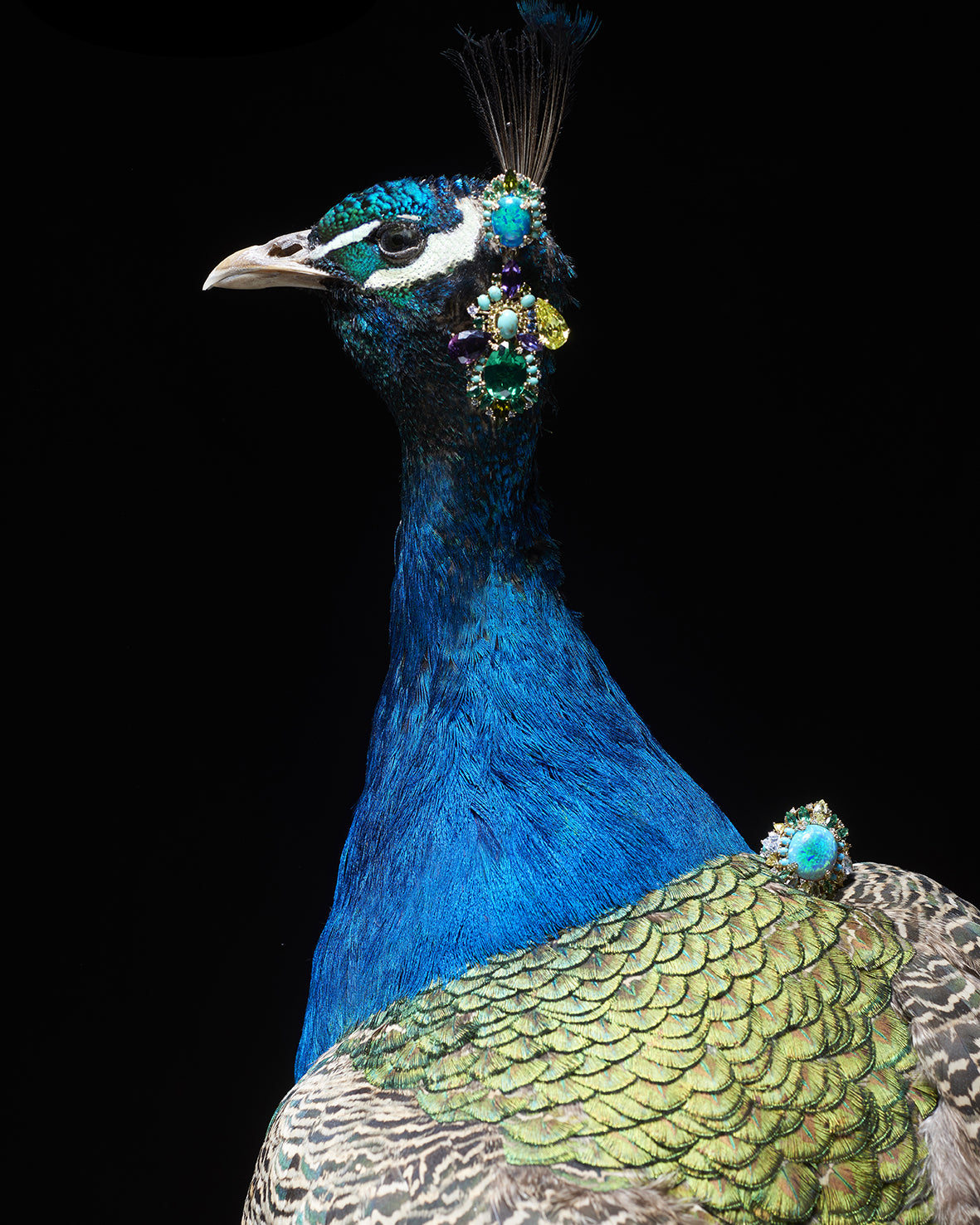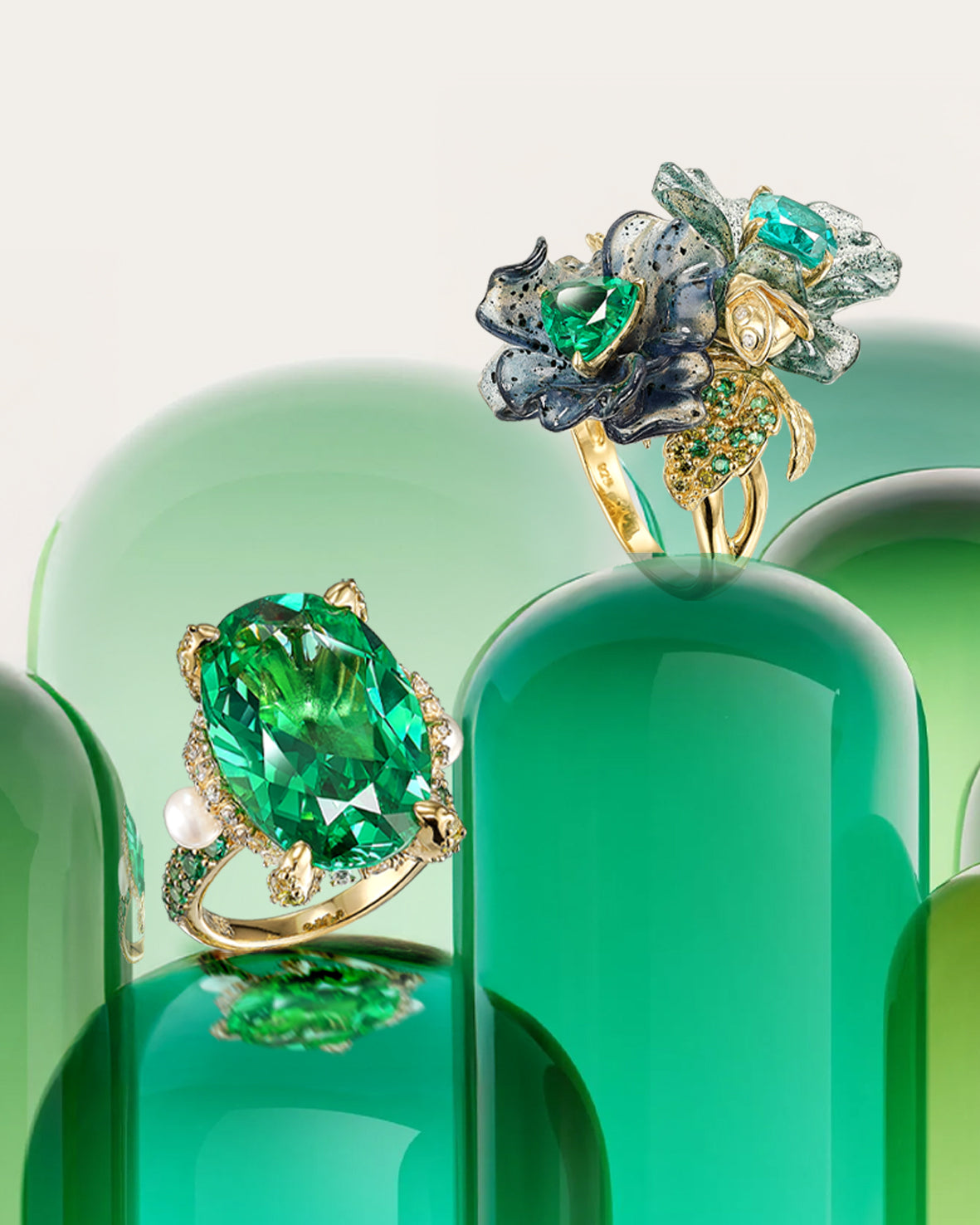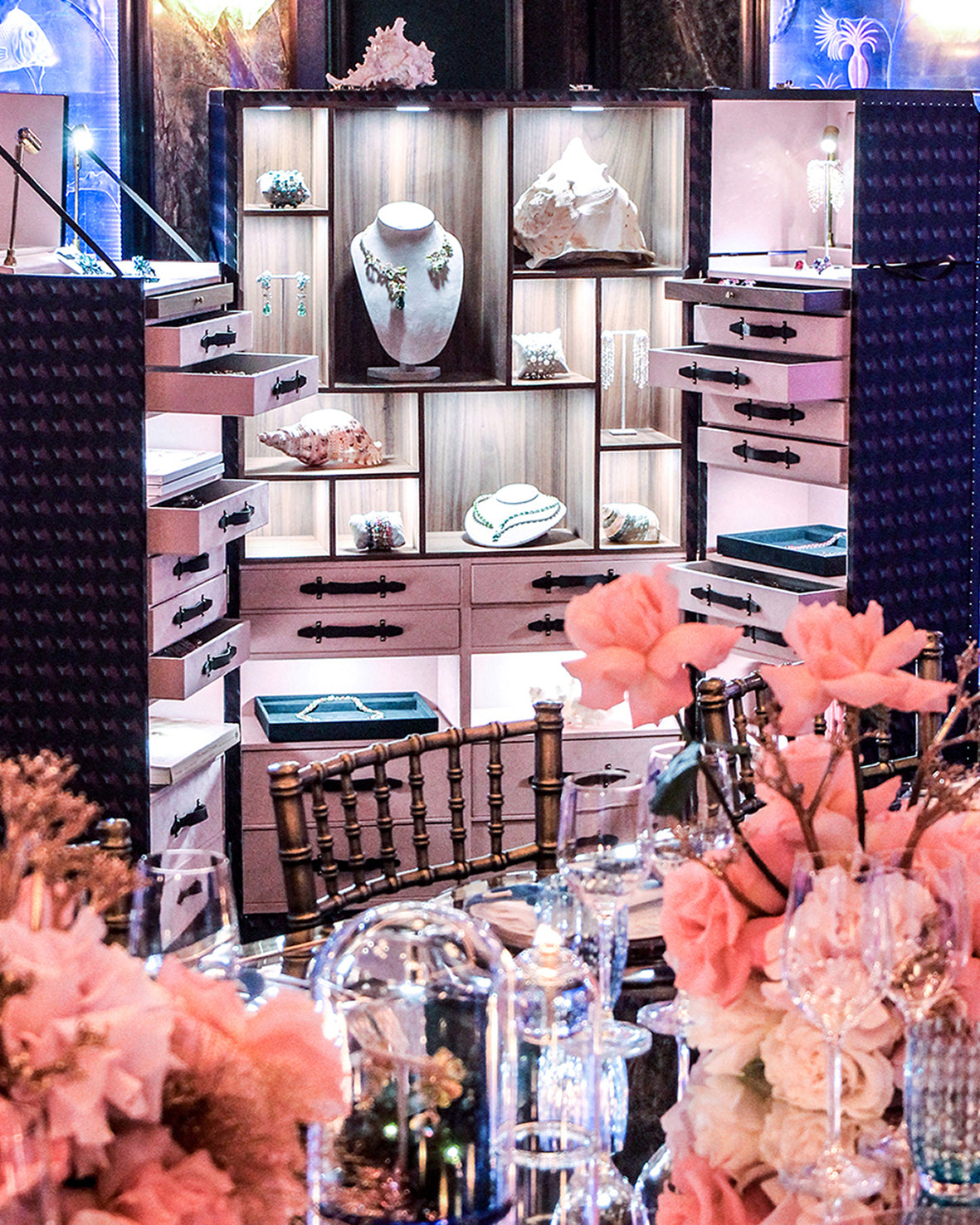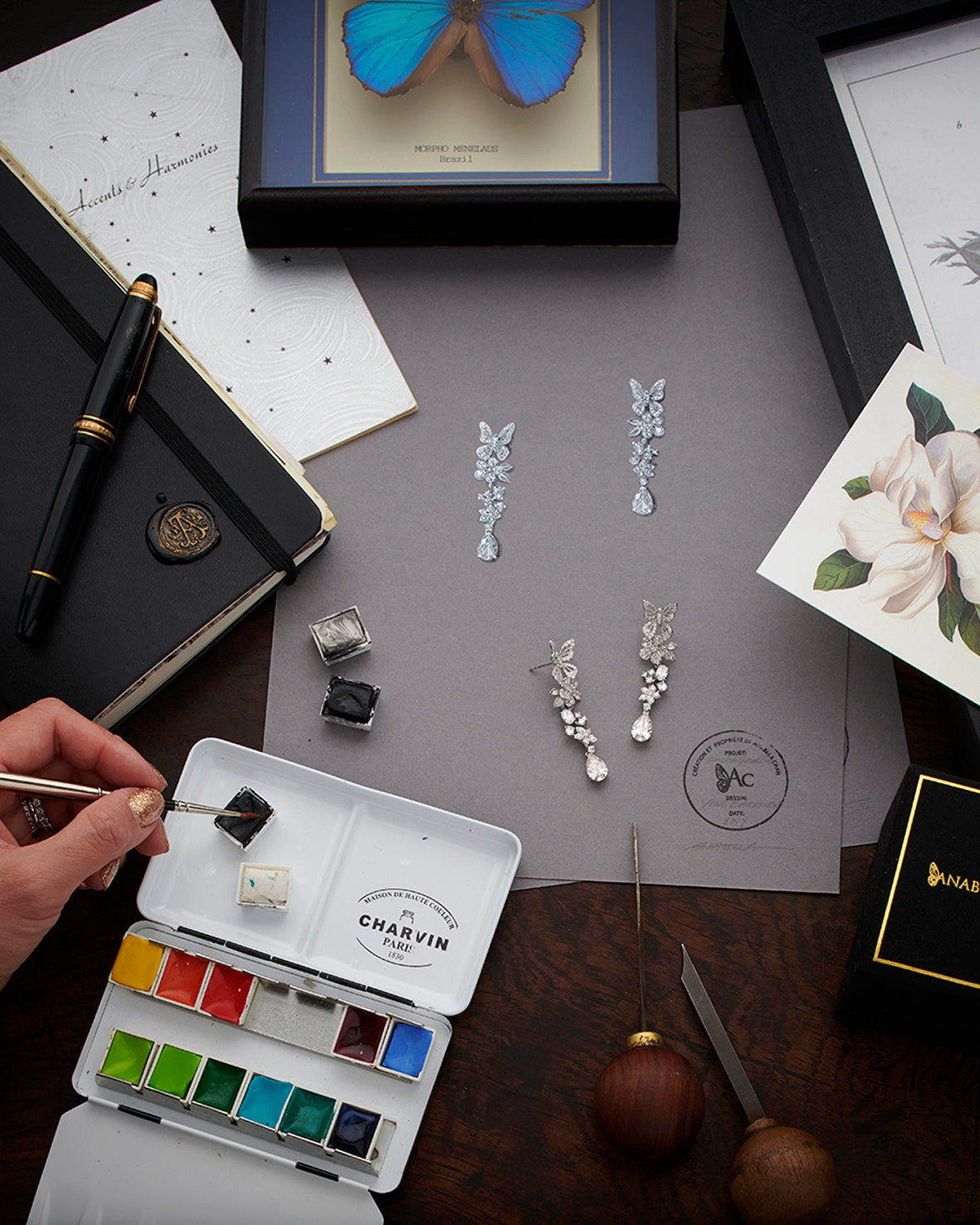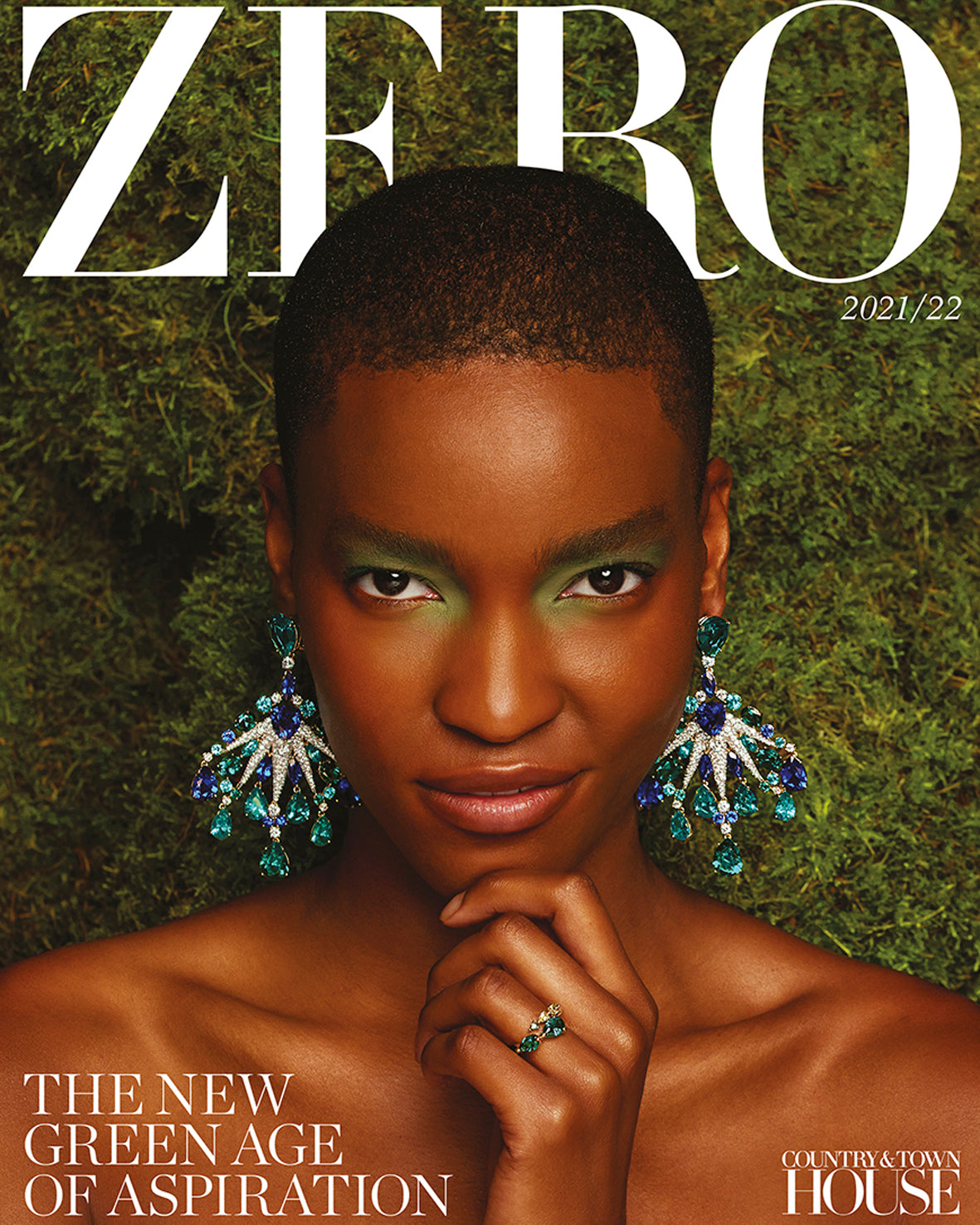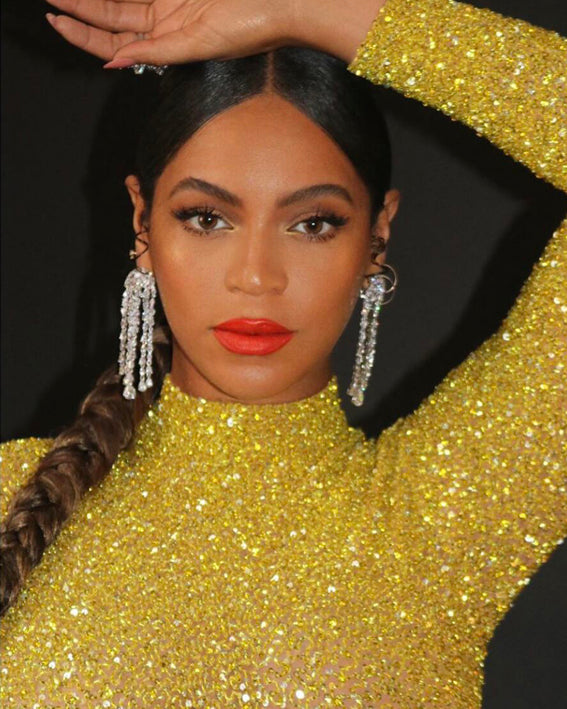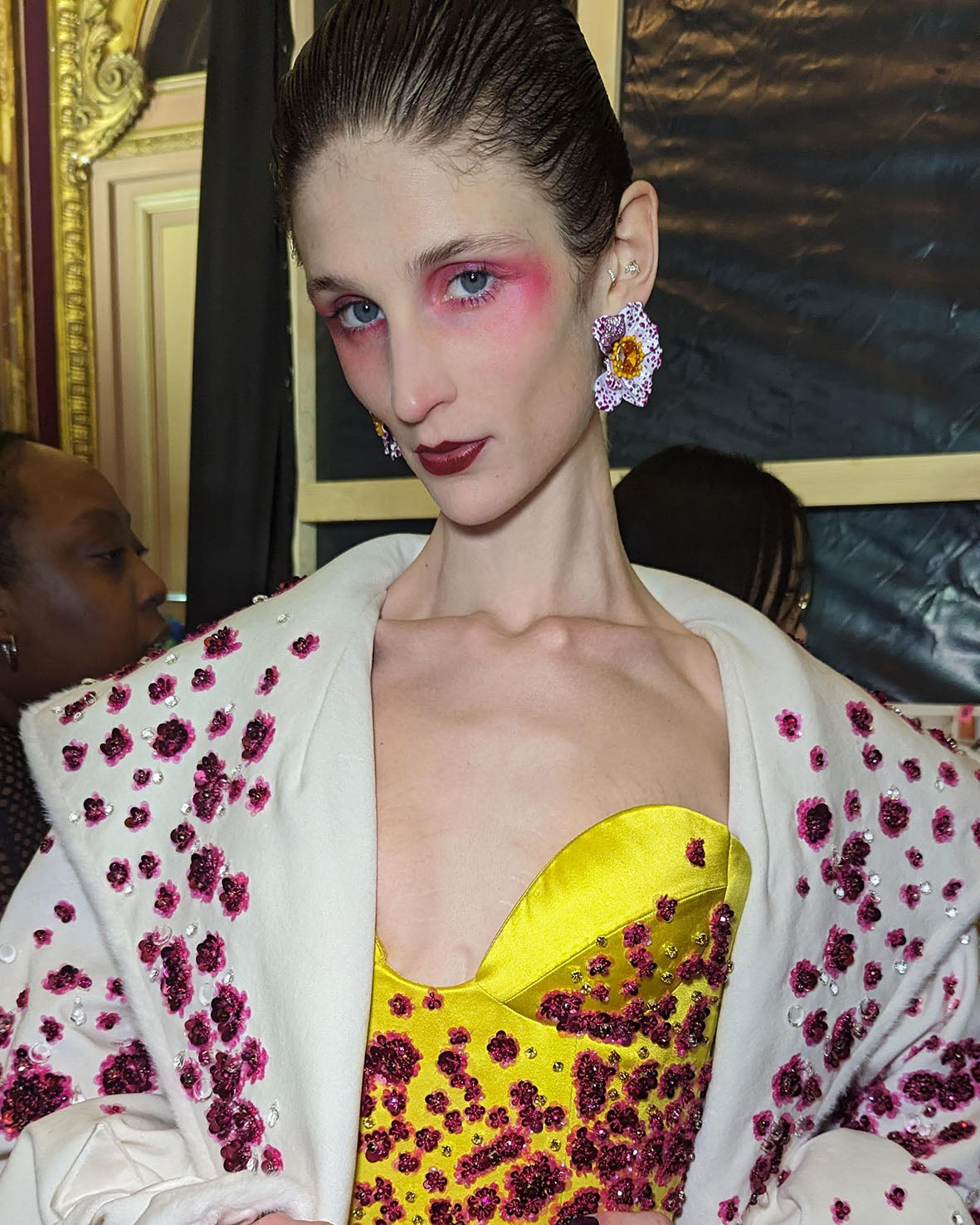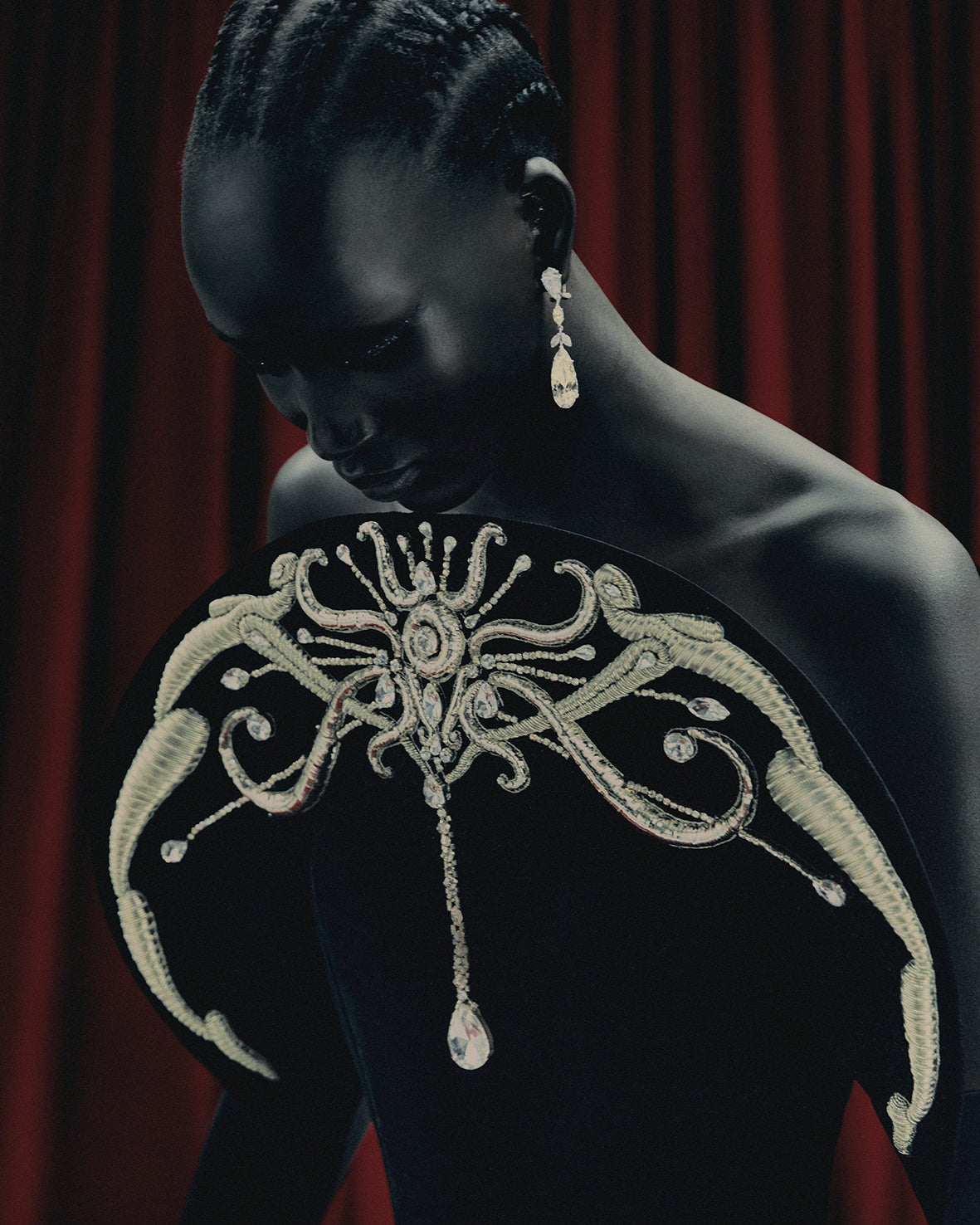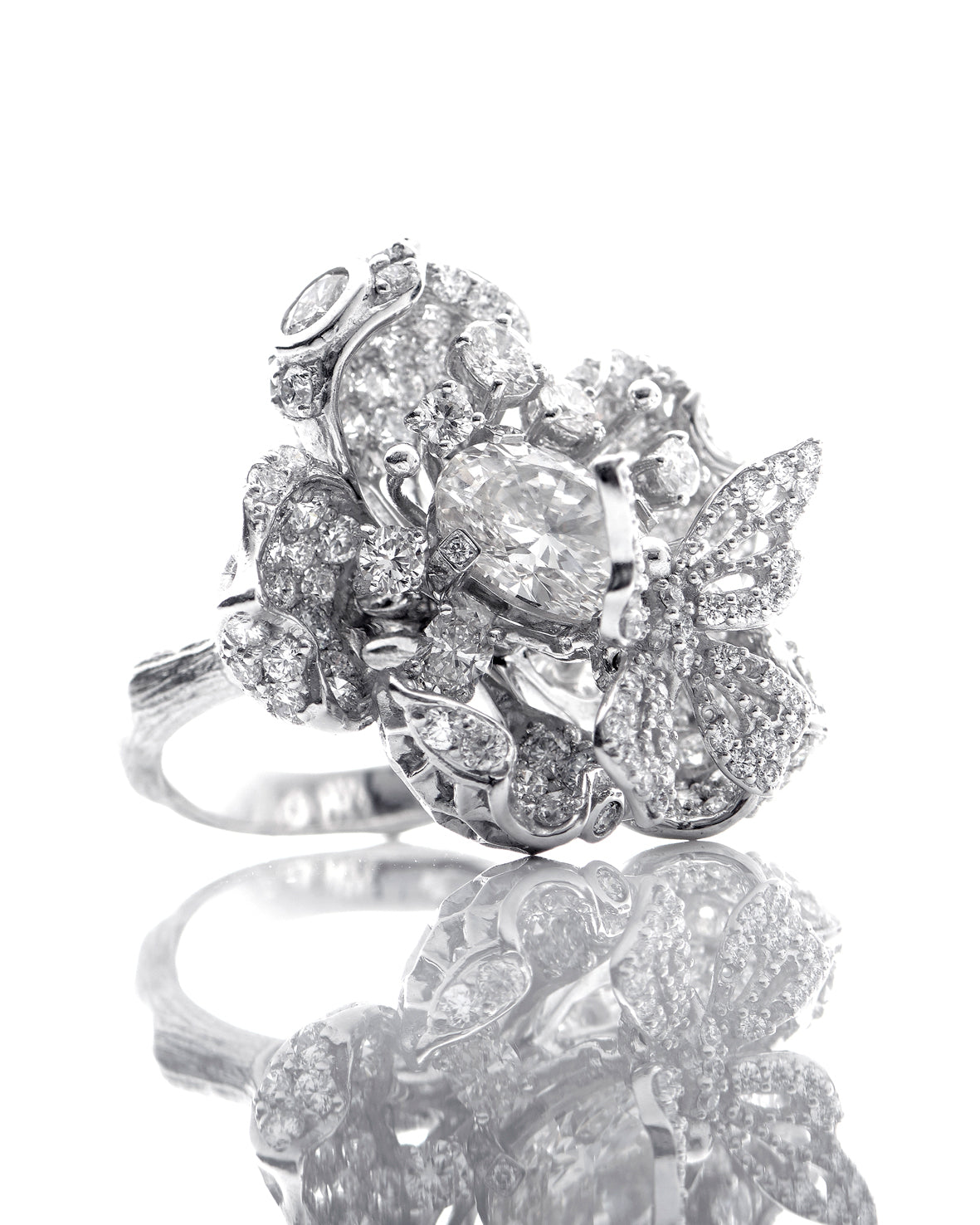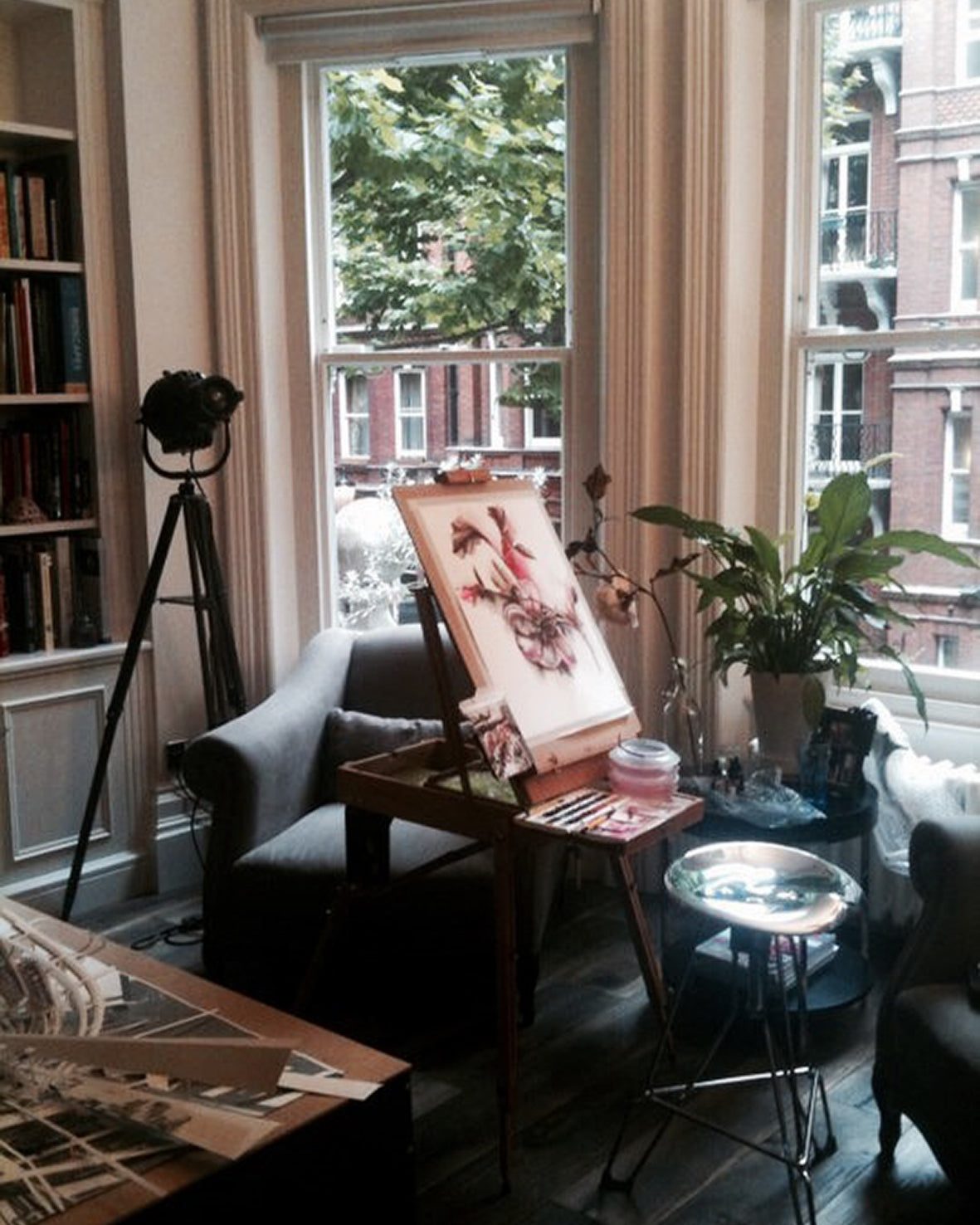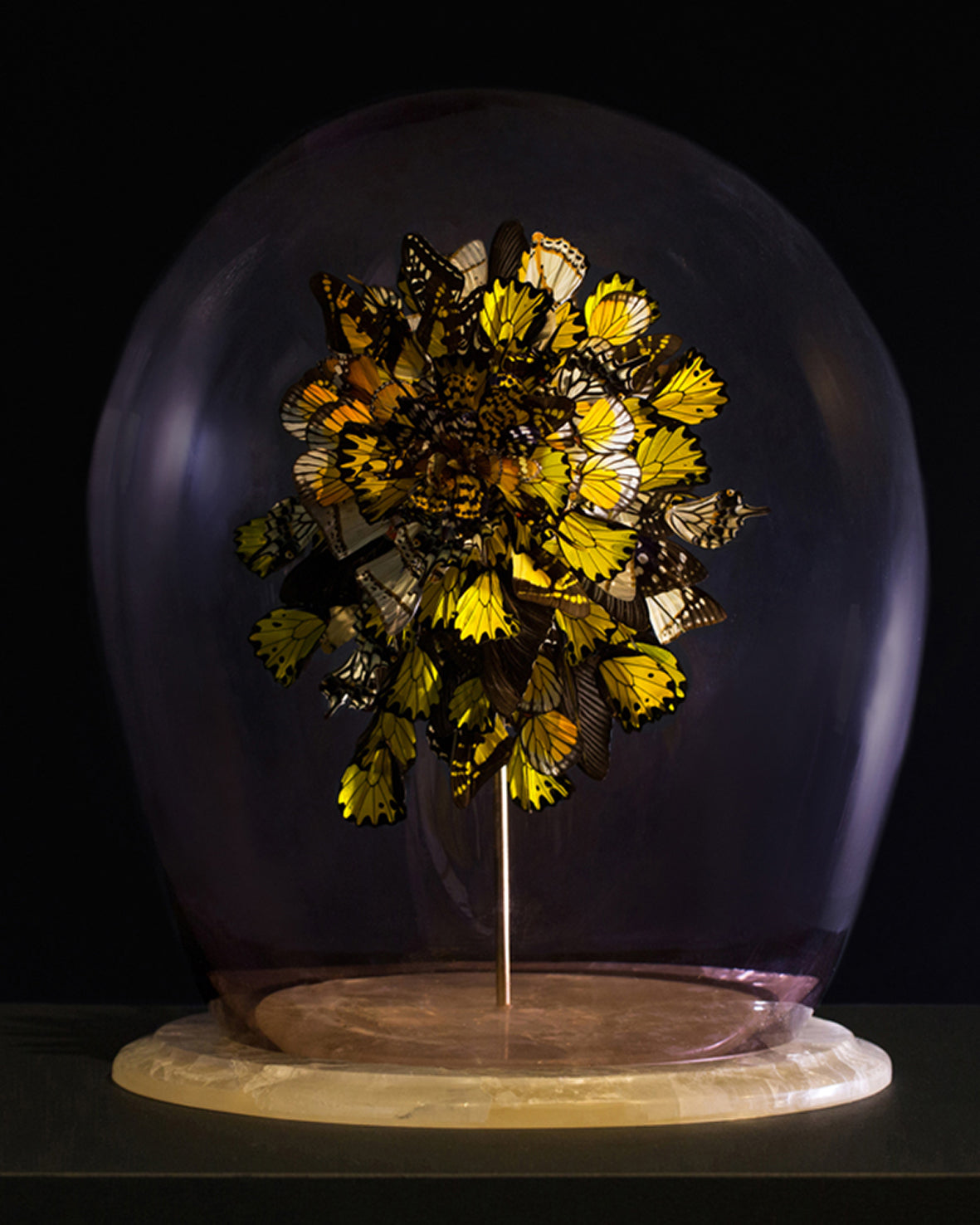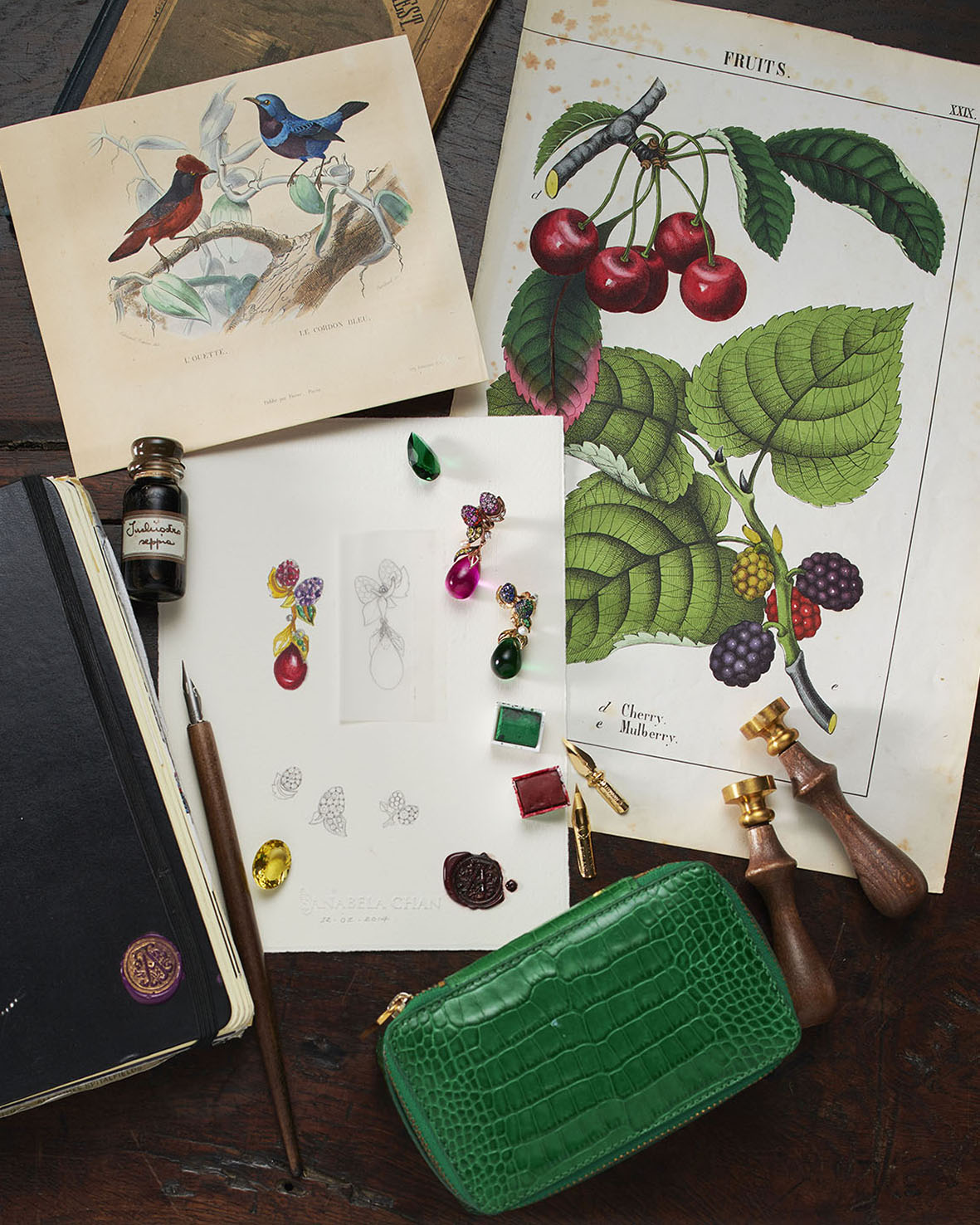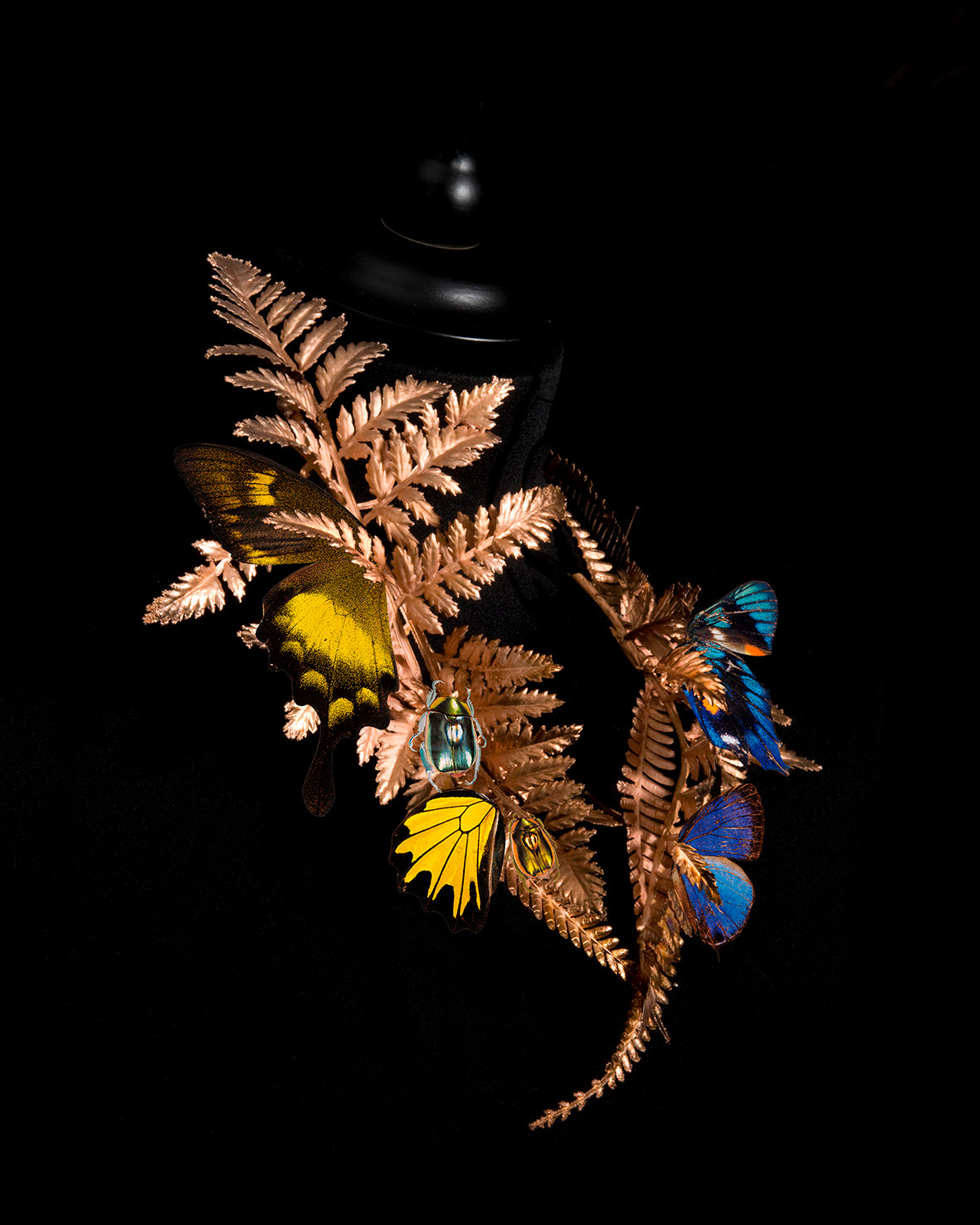Anabela Chan Joaillerie x the Watermark
The luxury world of fashion and jewellery has long been accused of damaging the environment, either with waste produced by fashion that ultimately ends up in landfill, or the devastation to land capes and communities caused by mining. In the past few years, however, both industries have looked to science to find answers to these issues.

In the fashion world, luxury brands have been experimenting with plant-based leathers, as more consumers demand animal-free alternatives that do not require hazardous chemicals for tanning. Hermes and Stella McCartney have created bags using lab-grown, mushroom-based leather. Pineapple leaves, apple and grape skins (waste products from the fruit and wine industries respectively) and cactus (which can be grown in arid environments where farmers can grow no other crop) are now being used to make synthetic leather for designer accessories, while orange fibre and castor beans are a couple of sources being investigated for fashion textiles. There is a growing enthusiasm across the industry to offer more sustainable choices to meet consumer demand.
When it comes to sparkling gemstones, the discussion has become increasingly polarised over which is better - is better- a diamond or coloured gemstone that’s been grown in sterile, scientific environment, or one that was formed millions of years ago deep underground but results in environmental damage when excavated. The evolution of laboratory grown ‘fast’ gemstone has become a major disruptor in the traditional jewellery industry as part of this new wave of conscious luxury.
The biggest driver for change and demand for sustainable choice has come from young consumers, who have shown less desire to buy mined diamonds than previous generations and are proving to be a booming market for science-made rocks created with sustainability and ethics in mind.
"The core is the millennial and the Generation Z customers who are very tech aware and into sustainability," says Mova Akhavi, CE0 of VRAI, the retail division of the American lab-grown diamond producer Diamond Foundry. “They want jewellery where they know how it has been made and the impact of that on the environment.”
The technology to grow diamonds originally produced for industry, has been around since the 1950s, but the game-changer has been the ability to create gemstones in significant numbers. Lab-grown diamonds are atomically and chemically identical to natural diamonds and cut, polished and graded using the same traditional 4Cs method as natural diamonds.
Lab-grown rubies, sapphires, and many other synthetic gemstones are similarly atomically and chemically identical to their natural counterparts.
There are two methods: HPHT (high pressure high temperature), which simulates the geological conditions under which mined diamonds are created and CVD (chemical vapour deposition), which is the method used by Diamond Foundry. The diamonds are grown in plasma reactors which get extremely hot, and carbon-rich gases start attaching, layer by layer, to a tiny diamond crystal or seed. The process takes two to six weeks depending on the size of the diamond required. They are mostly 0.1ct to 7cts.

The history of synthetic rubies and sapphires, according to Laura Chavez, founder of lab-grown jewellery specialist Lark & Berry, began in the late 1800s. “They were engineered using various forms of the Verneuil method, also known as flame fusion, designed primarily for the synthesis of rubies and later adapted to create other gemstones,” she explains. The process for rubies involves melting a finely powdered aluminium oxide and chromium (for the ruby colour) with an oxyhydrogen flame and crystallising the melted droplets. It’s much like growing a crystal in a school science class.
The first rubies and sapphires were also created for industry, but gem-grade qualities found their way into jewellery. ‘After learning about growing diamonds and other stones, there was just no other option for me when launching my jewellery brand,” says Chavez, who uses stones from Japan, the USA and India where, she points out, they have the best gem cutters in the world. The various gemstone culturing (processes) leads to less waste for the planet versus mining for stones,” she says.
However, some methods do stand accused of consuming huge quantities of fossil fuels: HPHT, which is used notably in China and India, does not meet the same exacting environmental and working conditions expected elsewhere. However, “energy consumption is something that can be resolved,” says Anabela Chan, who is noted for her playfully flamboyant high jewellery using colourful lab-grown gems that feature regularly on the red carpet. “I am working with a company in Switzerland that takes carbon dioxide from the atmosphere and turns it into a state where it can used to make diamonds. It wasn’t invented to make diamonds; rather it’s an environmental solution.”
Hydropower used by Diamond Foundry, meanwhile, is a renewable energy source. Their facility is located next to a dam on the Columbia River in Washington State. “We work with Natural Capital Partners, a third-party organisation, to look at our carbon footprint and have become the first carbon-neutral producer,” says Mona Akhavi at Vrai. The foundry produces one million carats a year and will be expanding to three million in the next year.
Equally appealing to millennials is the price: these gemstones typically cost 30 percent less than natural ones and are, therefore, more accessible to younger consumers. Vrai’s fine jewellery, which has been worn by celebrities like Jennifer Lopez, is typically priced between US$1,000 and US$7,000 (for engagement and bridal). “The sweet spot for our customer is around US$4,000,”says Akhavi.
The prices have attracted accessible jewellery giants like Pandora, to small independent designers such as Lark & Berry, Anabela Chan, Kimai and Matilde (daughter of football manager José Mourinho), who are drawn to lab-grown gems for personal reasons and by consumer demand. What is surprising is that even a diamond mining giant like De Beers has introduced a lab-grown diamond brand, called Lightbox, aimed at a young fashion-conscious consumer.

The mined gemstone industry has been plagued by labour abuses, environmental damage and a persistent lack of transparency that it is endeavouring to resolve. It employs millions of people globally and many communities developing nations rely on income and welfare from diamond mining. The traditional mining companies are working to offset their impact by restoring land and investing heavily in local communities.
“Our mission is to turn a finite resource below ground into infinite opportunity above ground,” says David Prager, executive vice-president and chief brand officer of De Beers Group. “Diamonds have played an important role in the economies or Botswana, South Africa and Namibia, and our Building Forever sustainability framework is designed to maximise the benefit a diamond from De Beers can create in protecting the planet and improving people’s lives.”
There is a certain irony that the fashion industry is looking to nature to answer its sustainability problems, while some in the jewellery industry are exploring alternatives in the laboratory. Each solution has its flaws, but ultimately it is down to the consumer to make their choice. x



